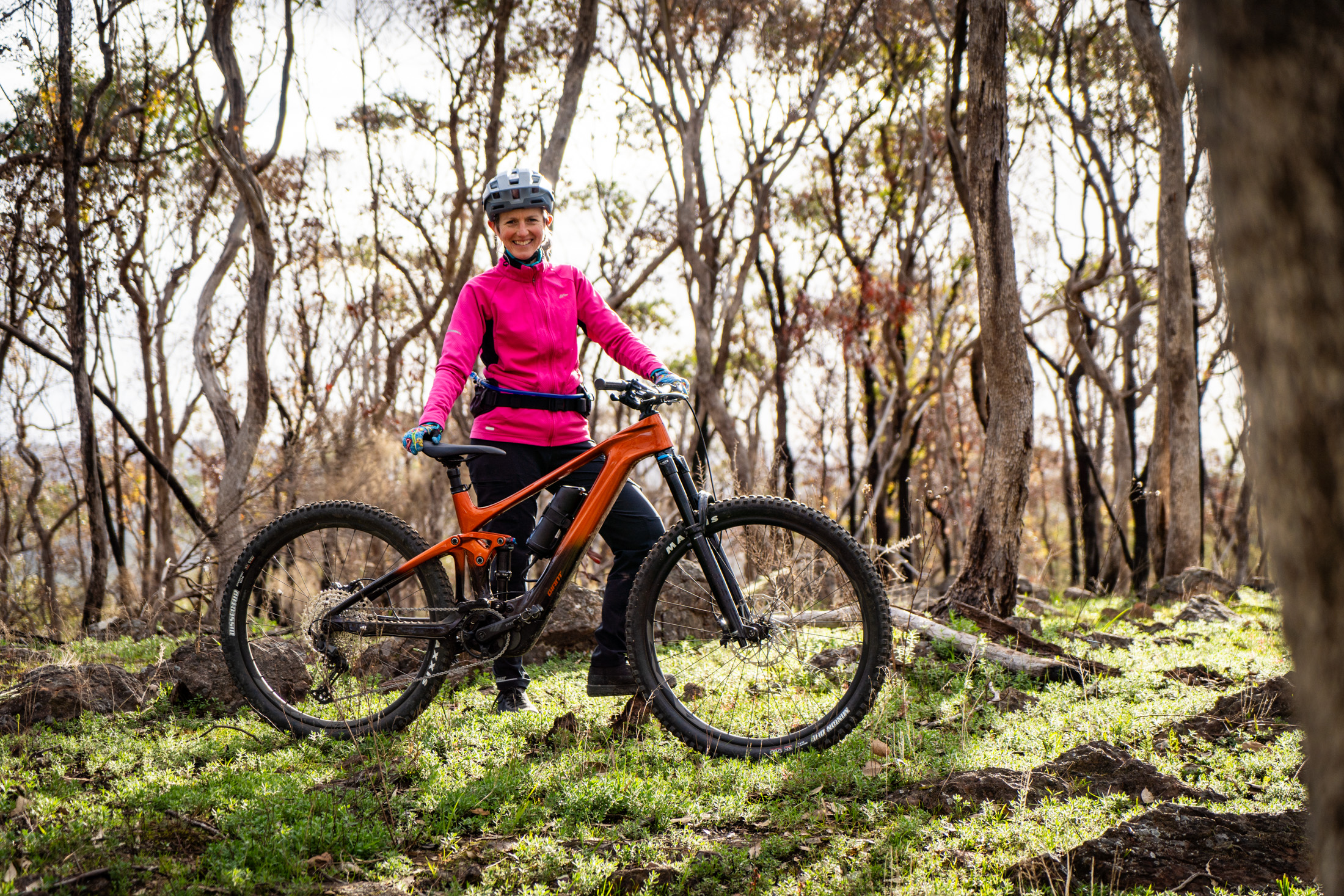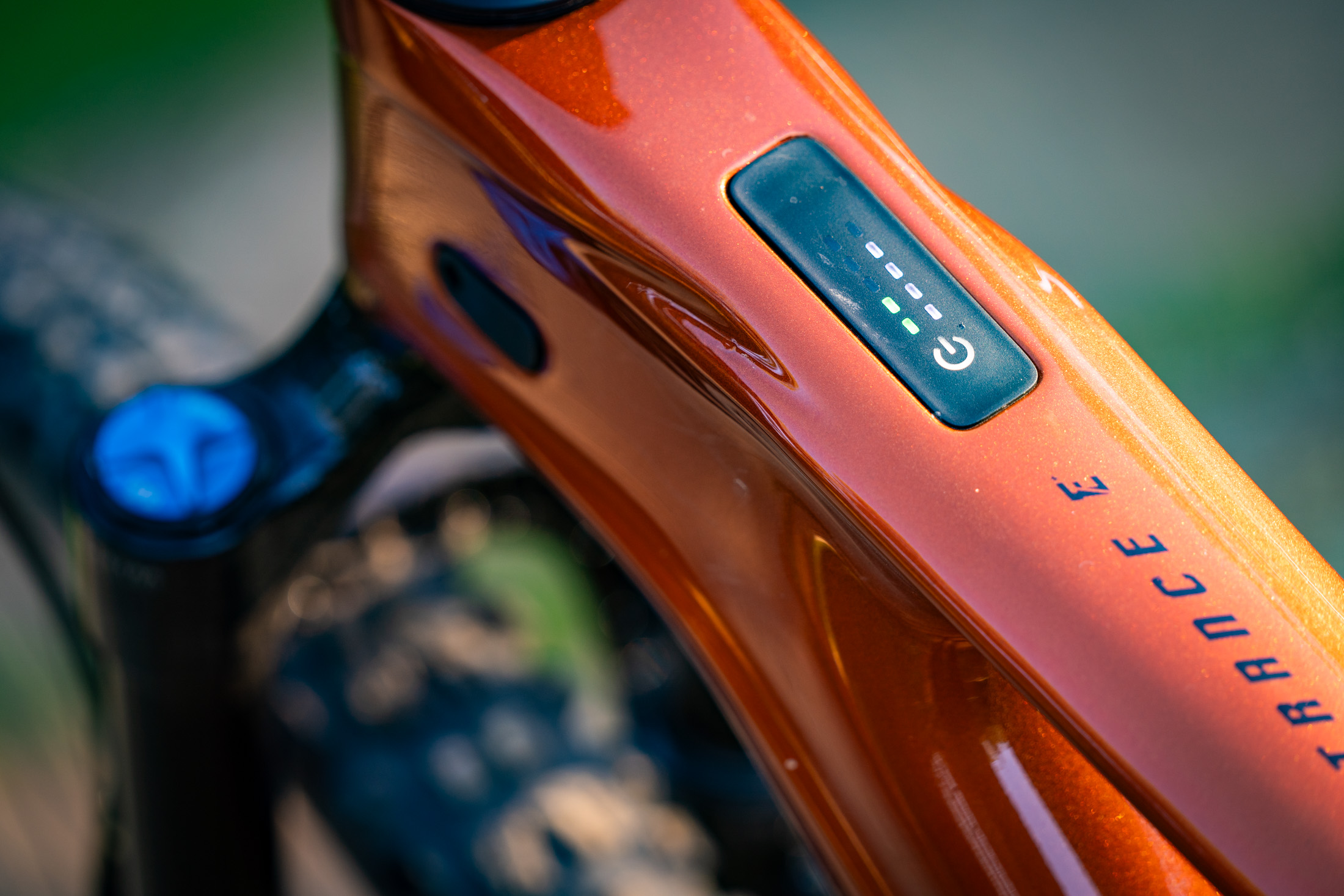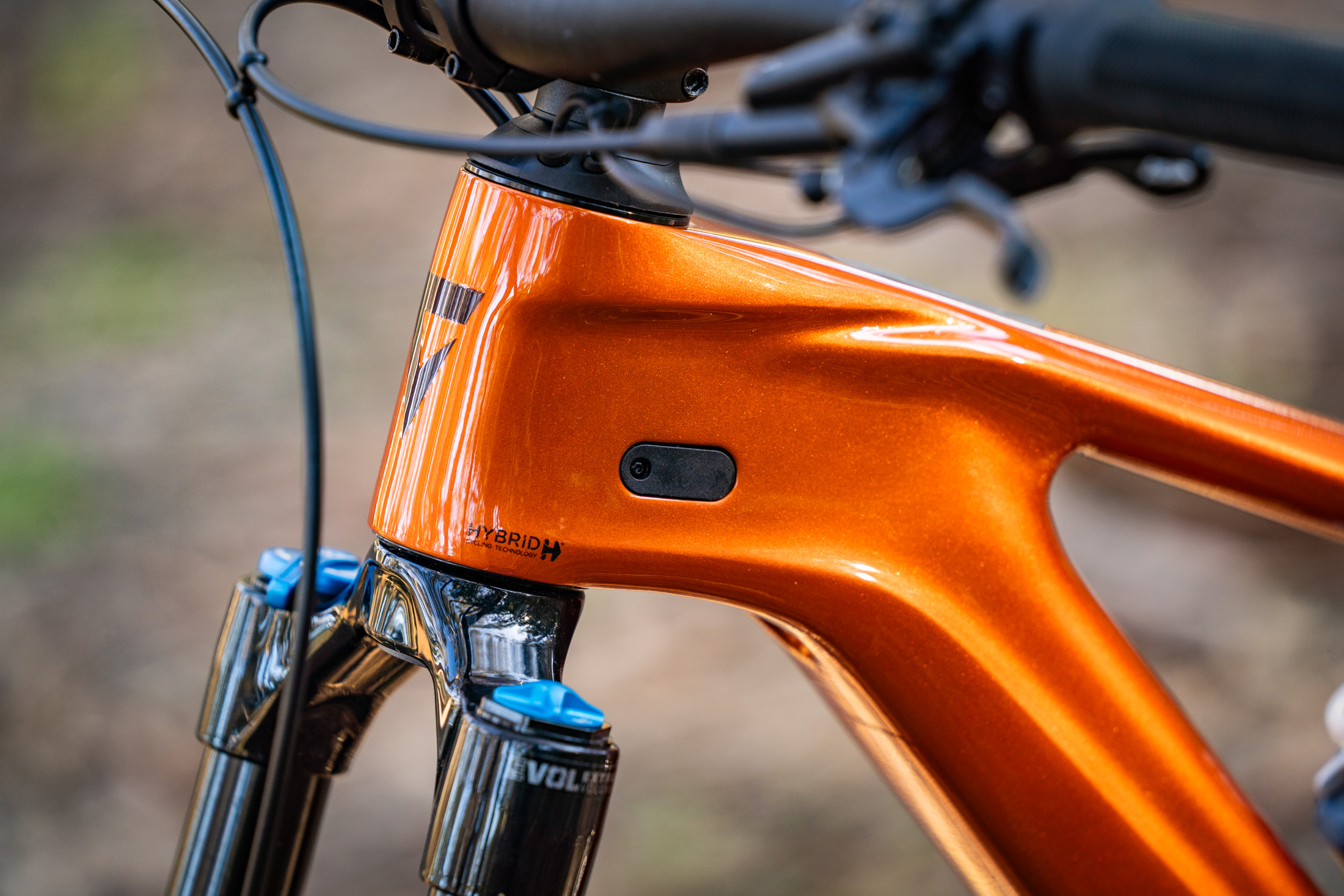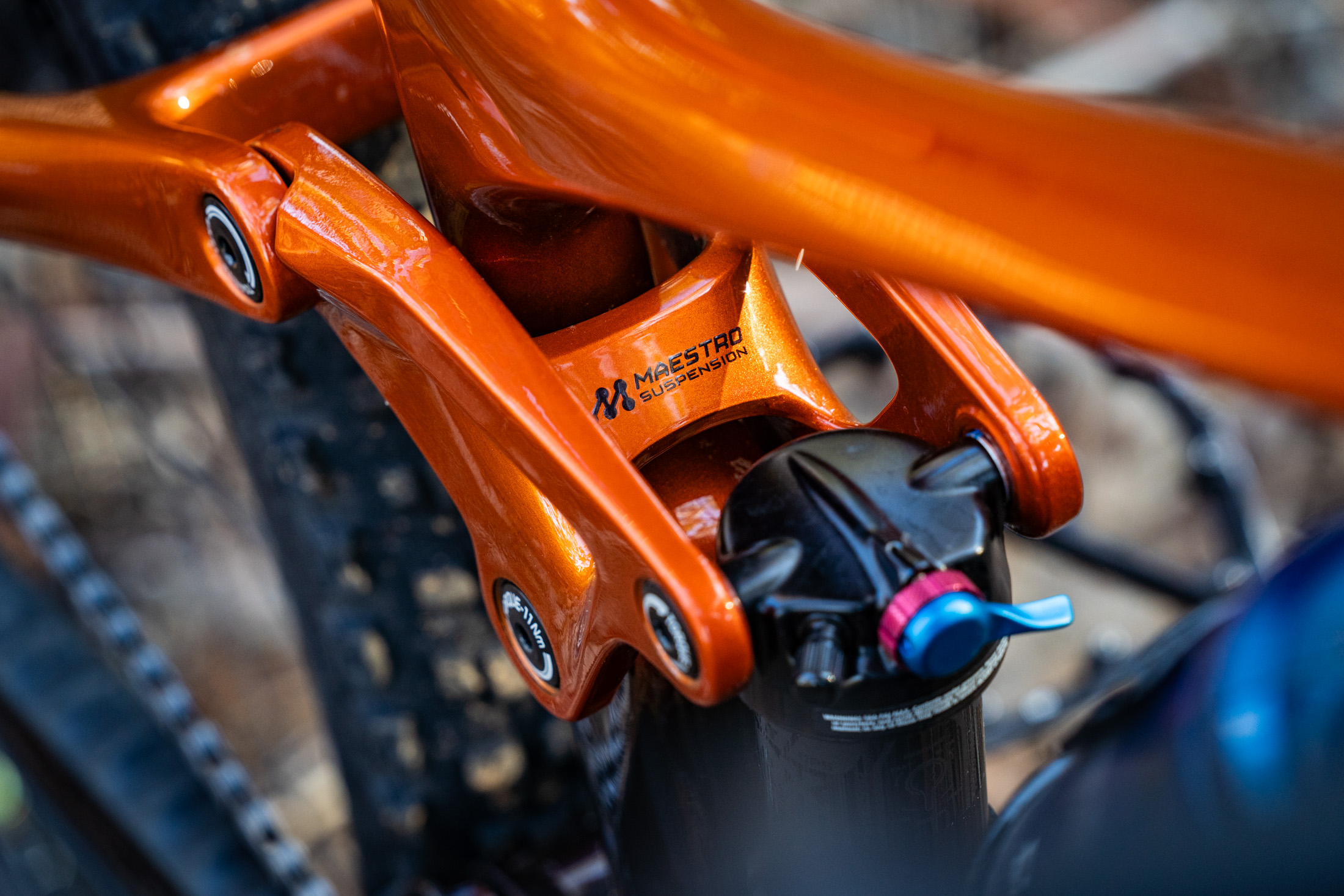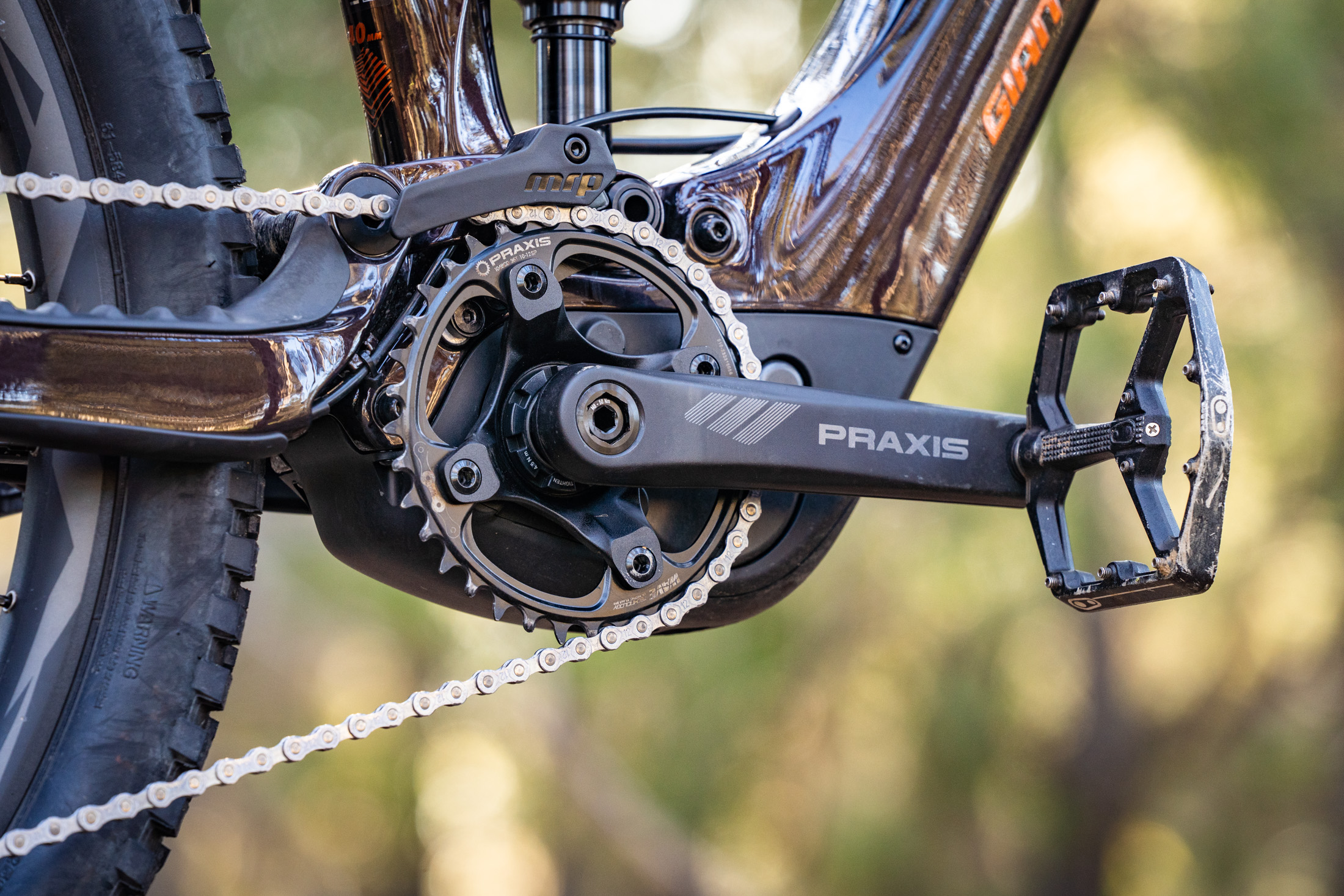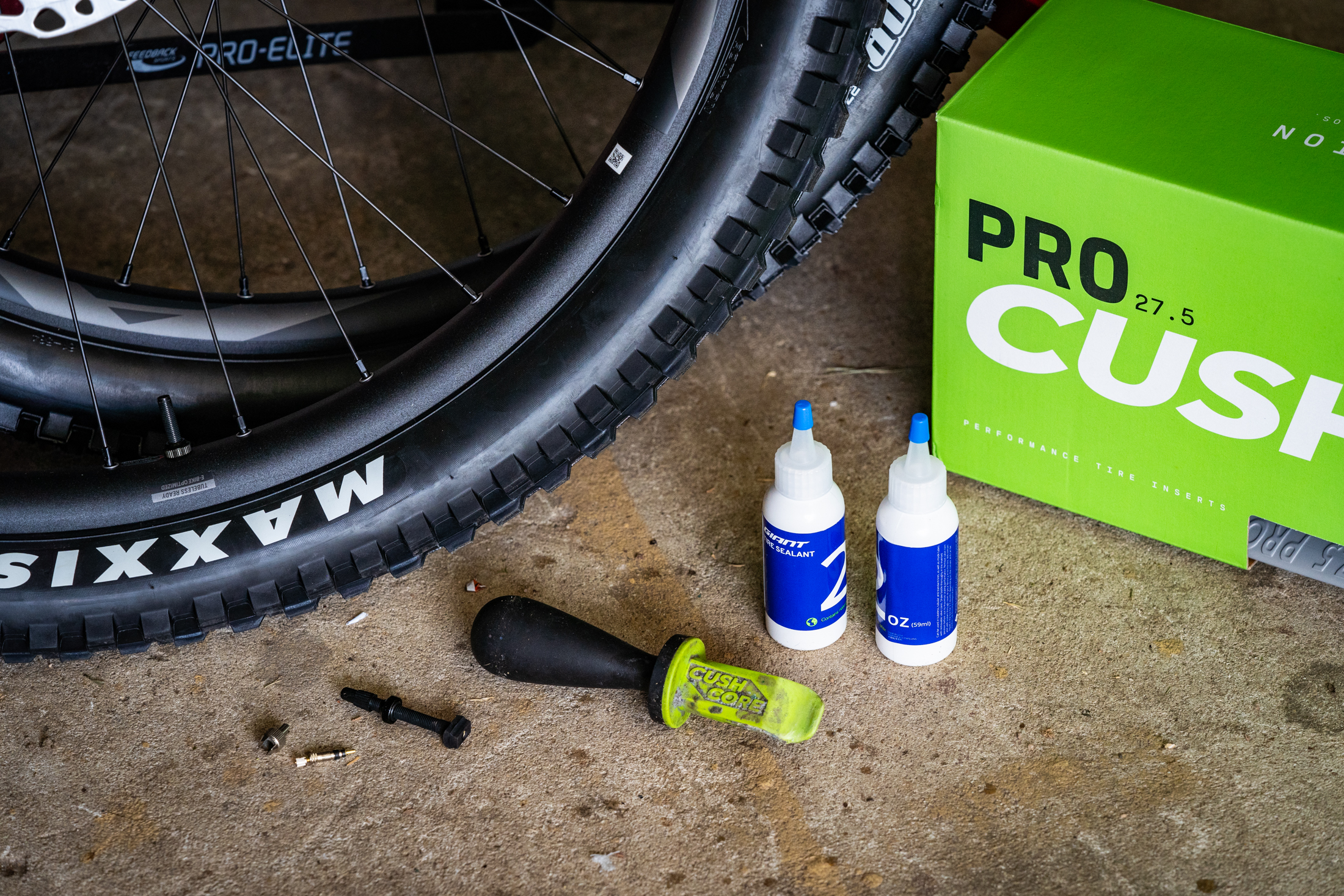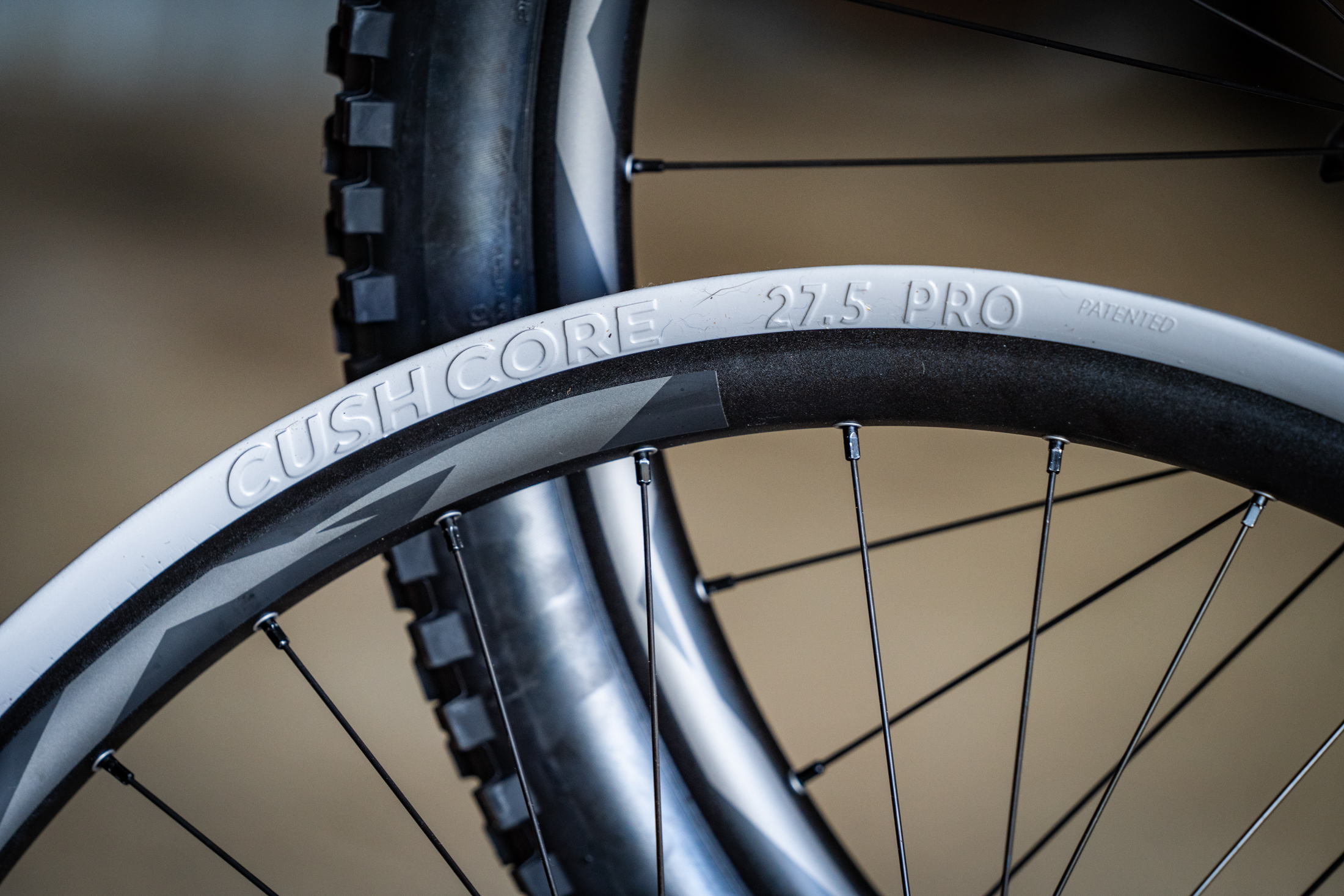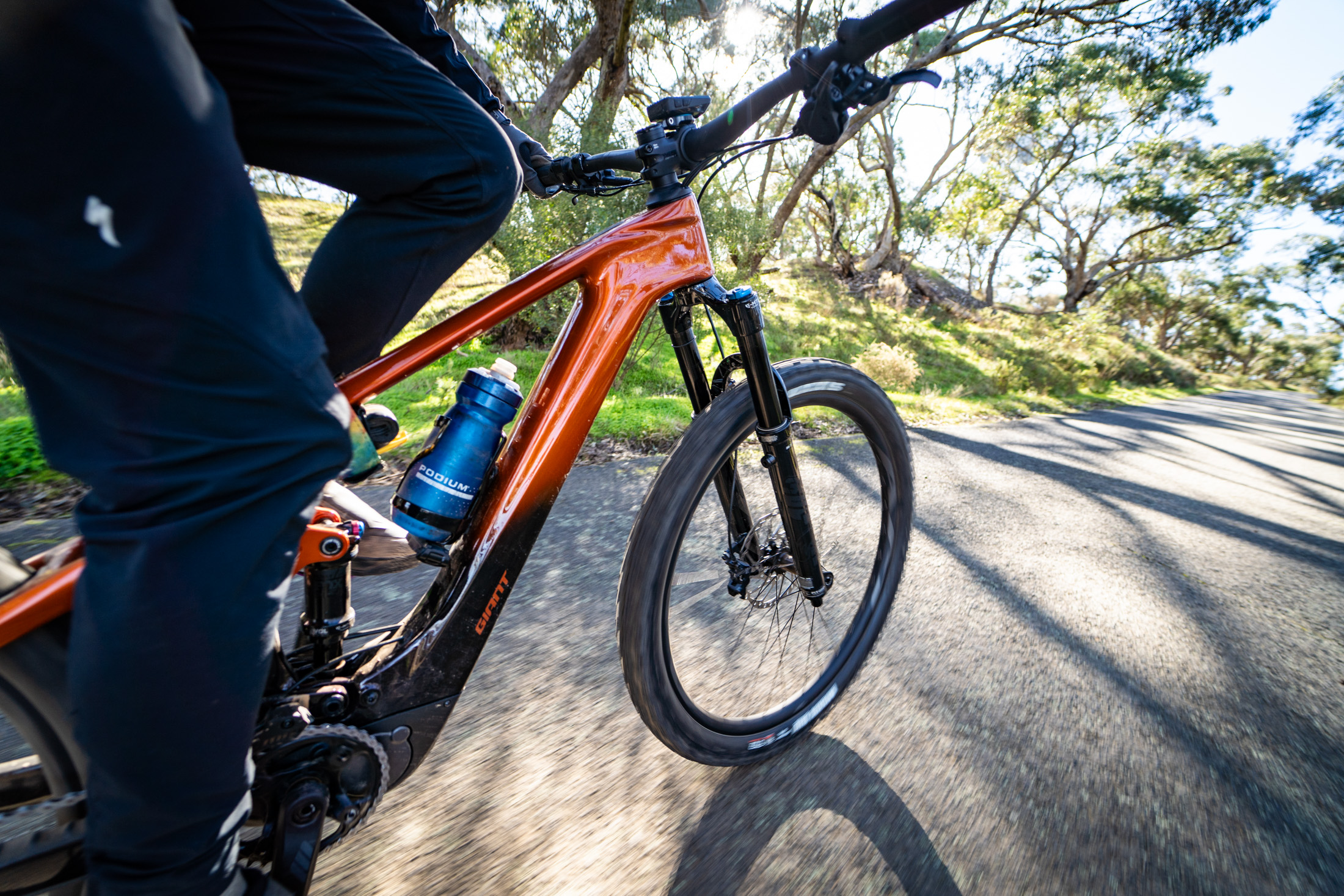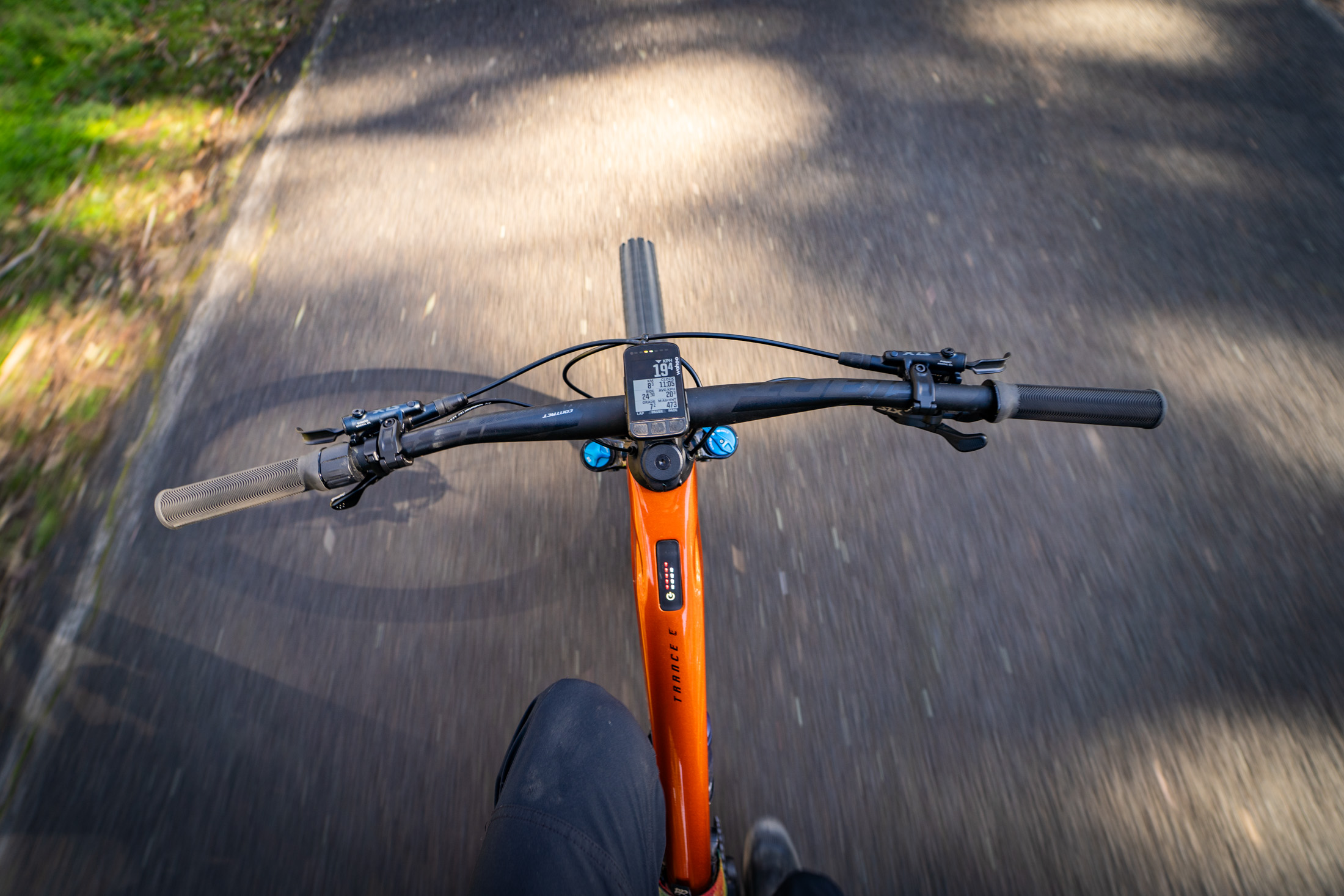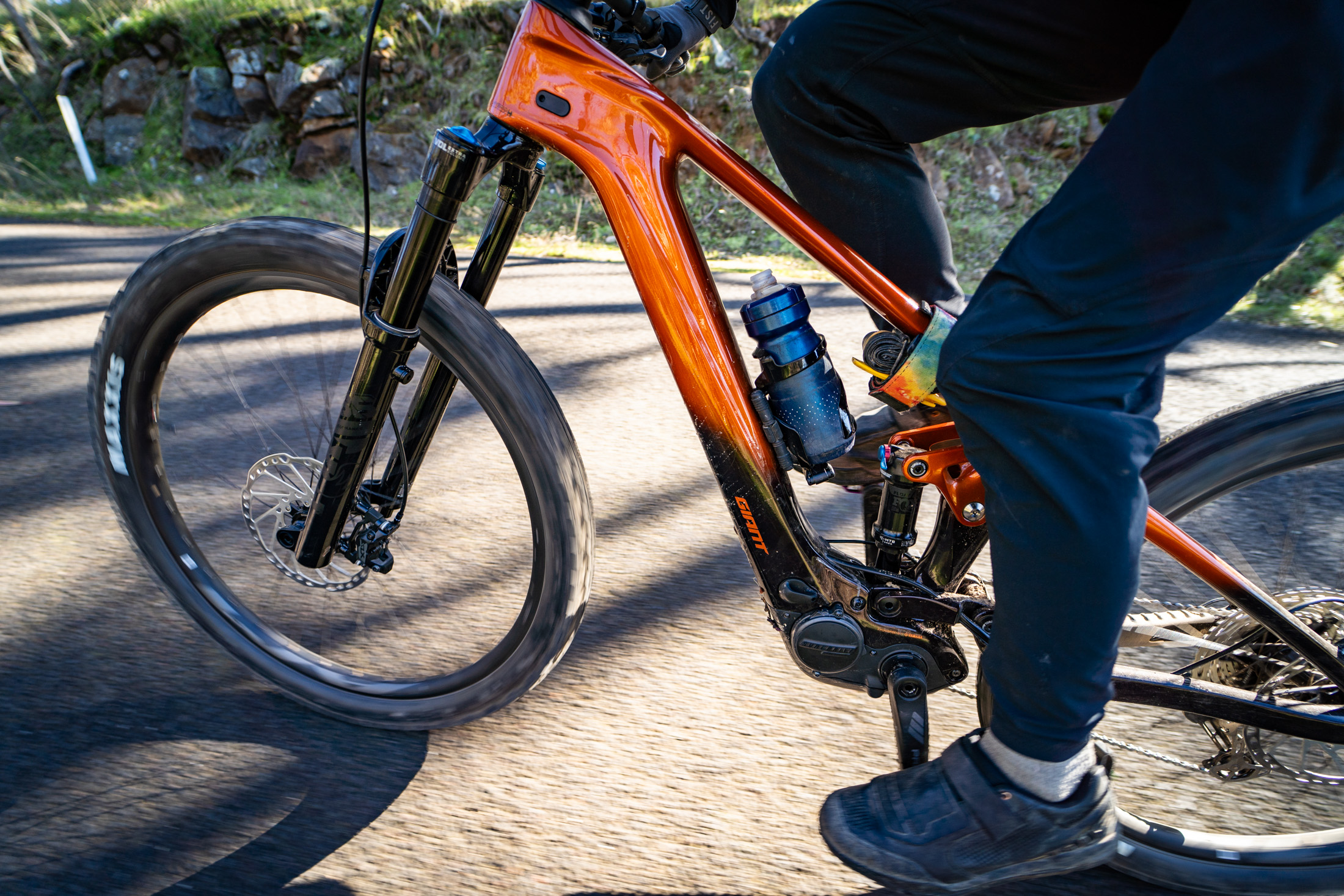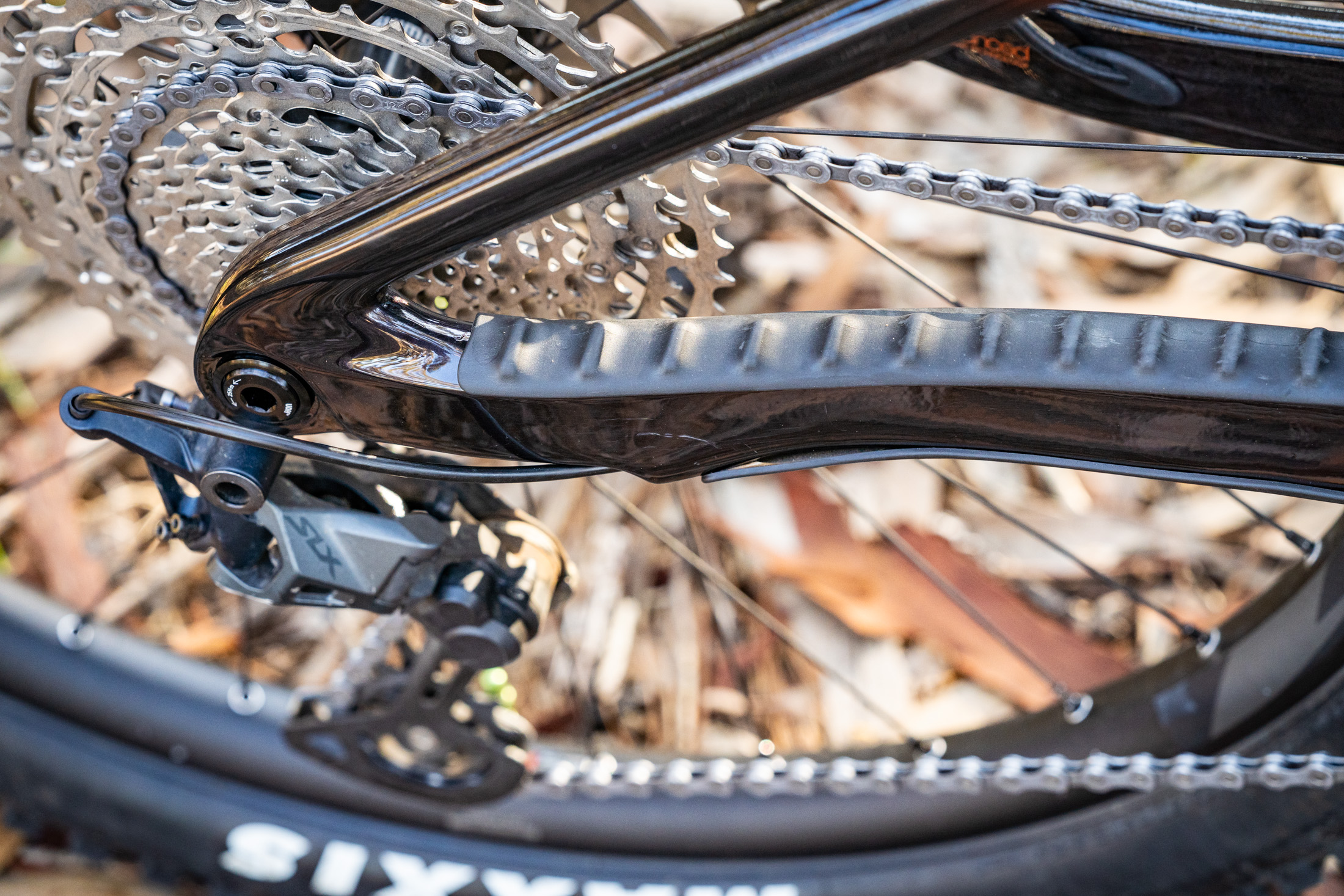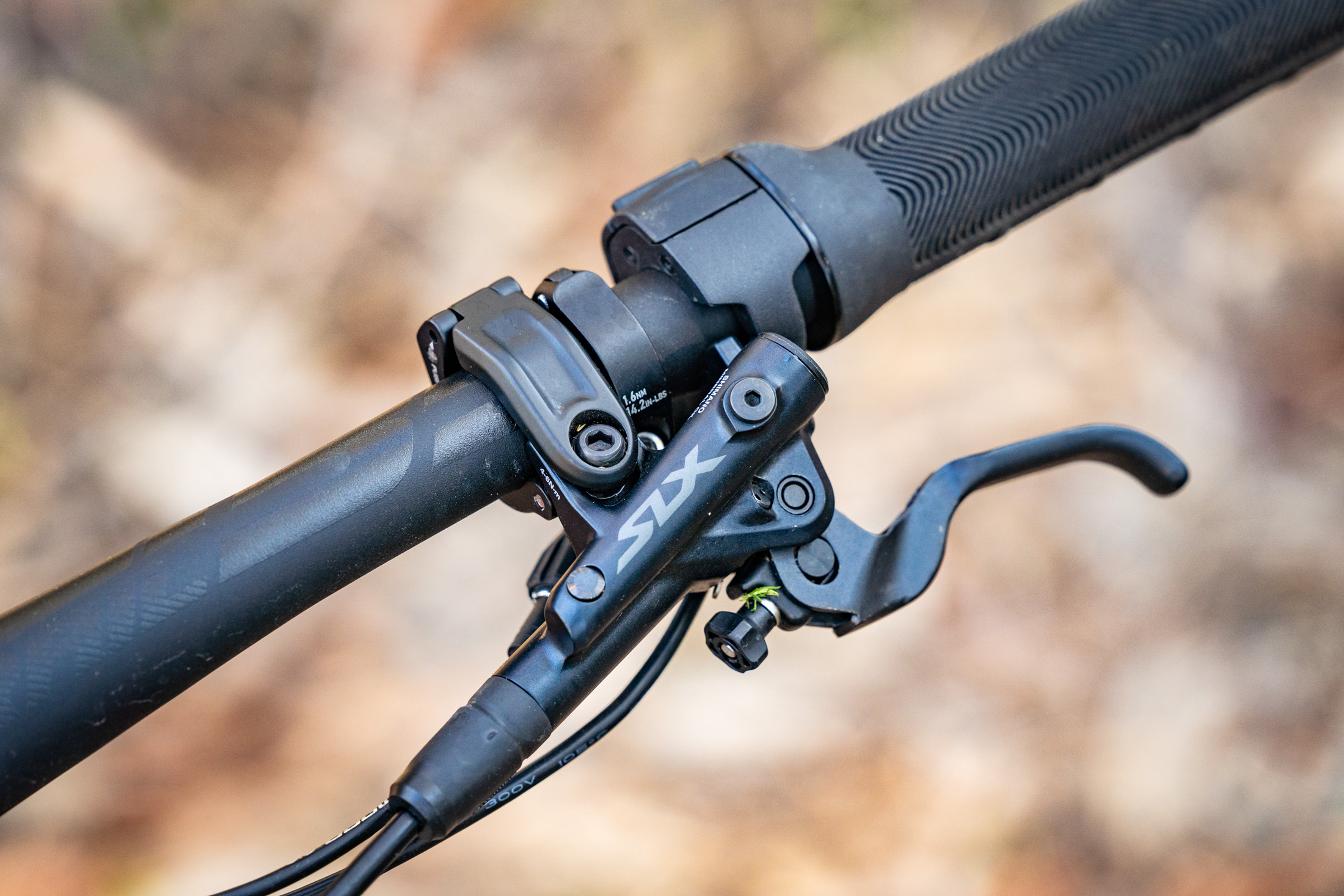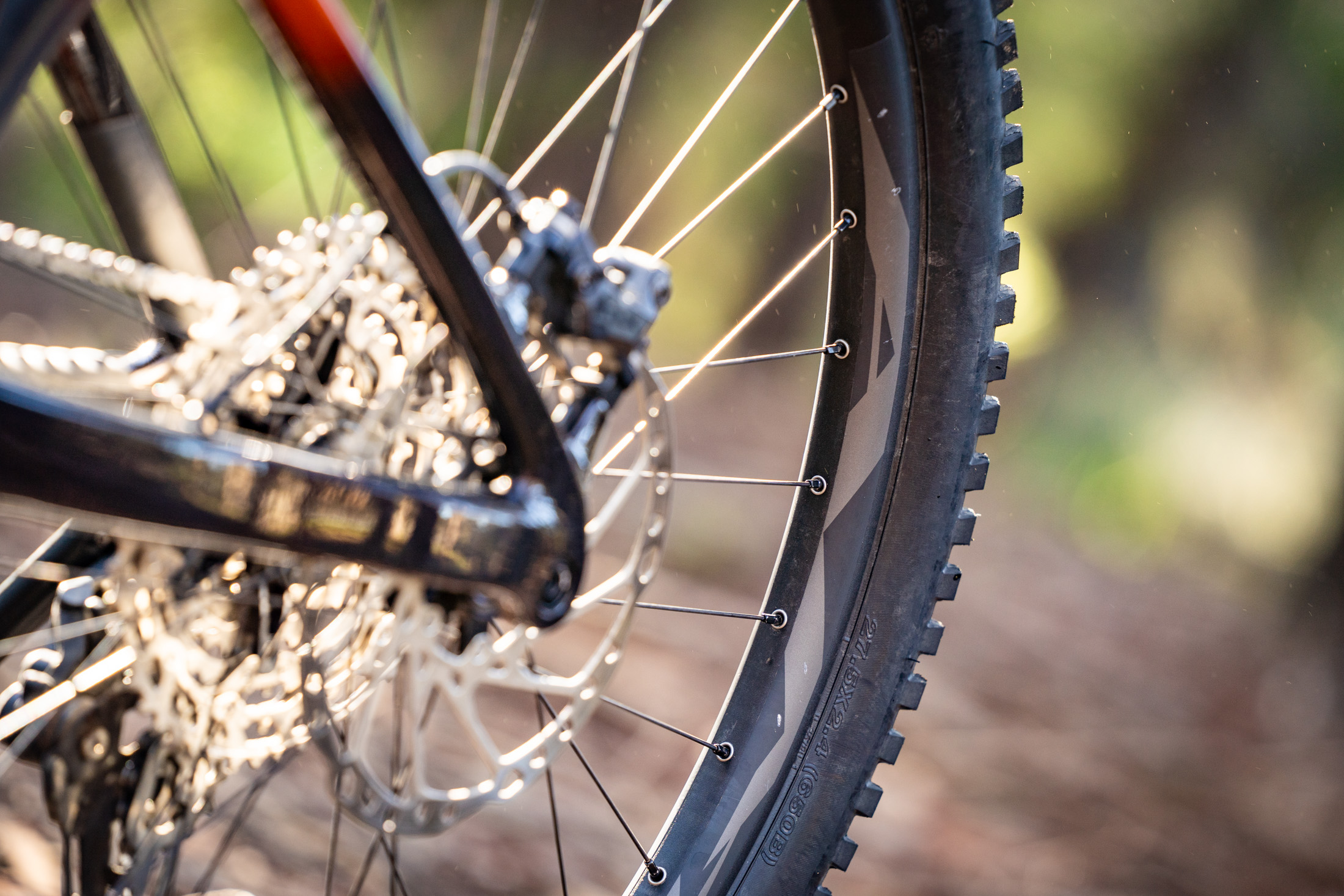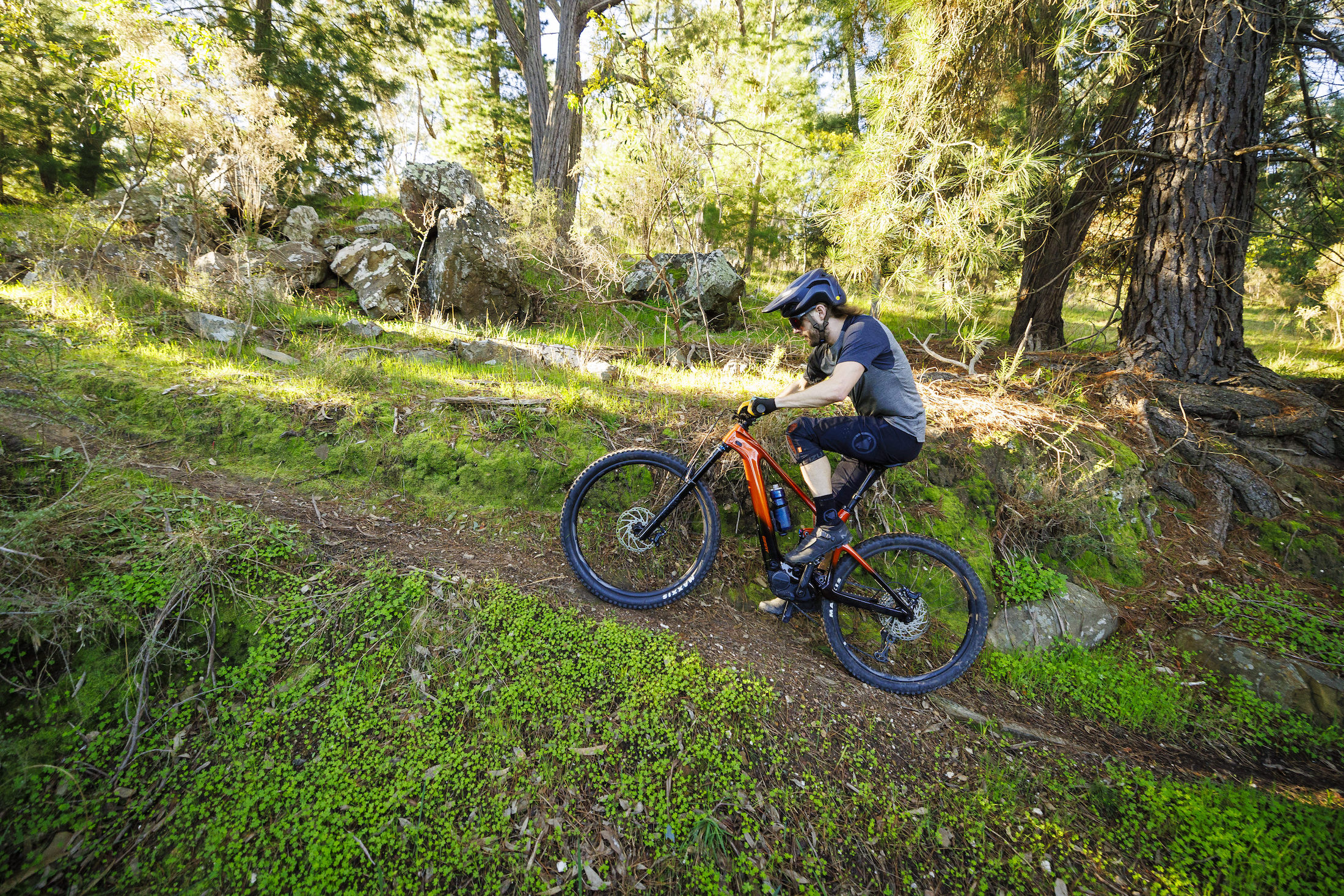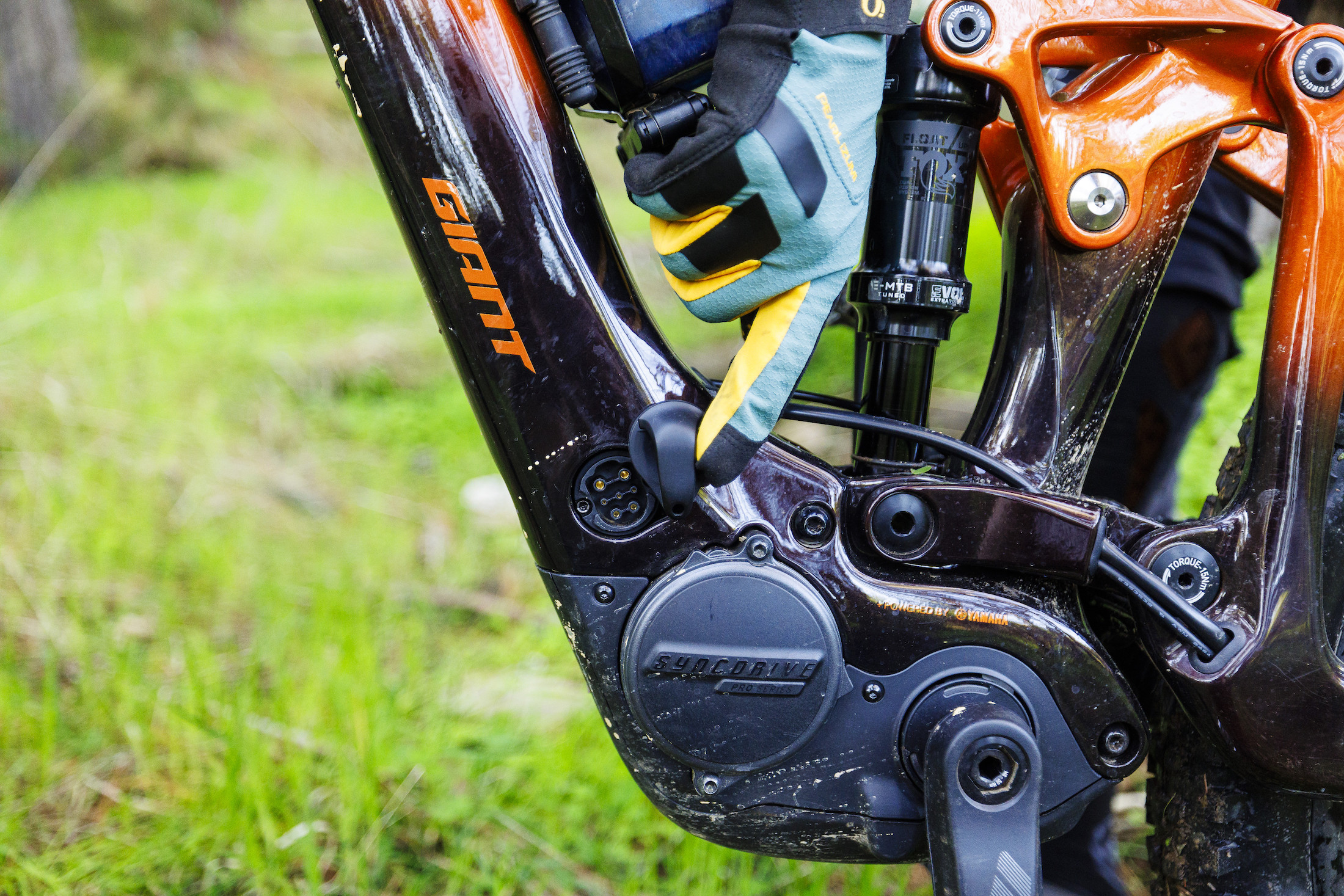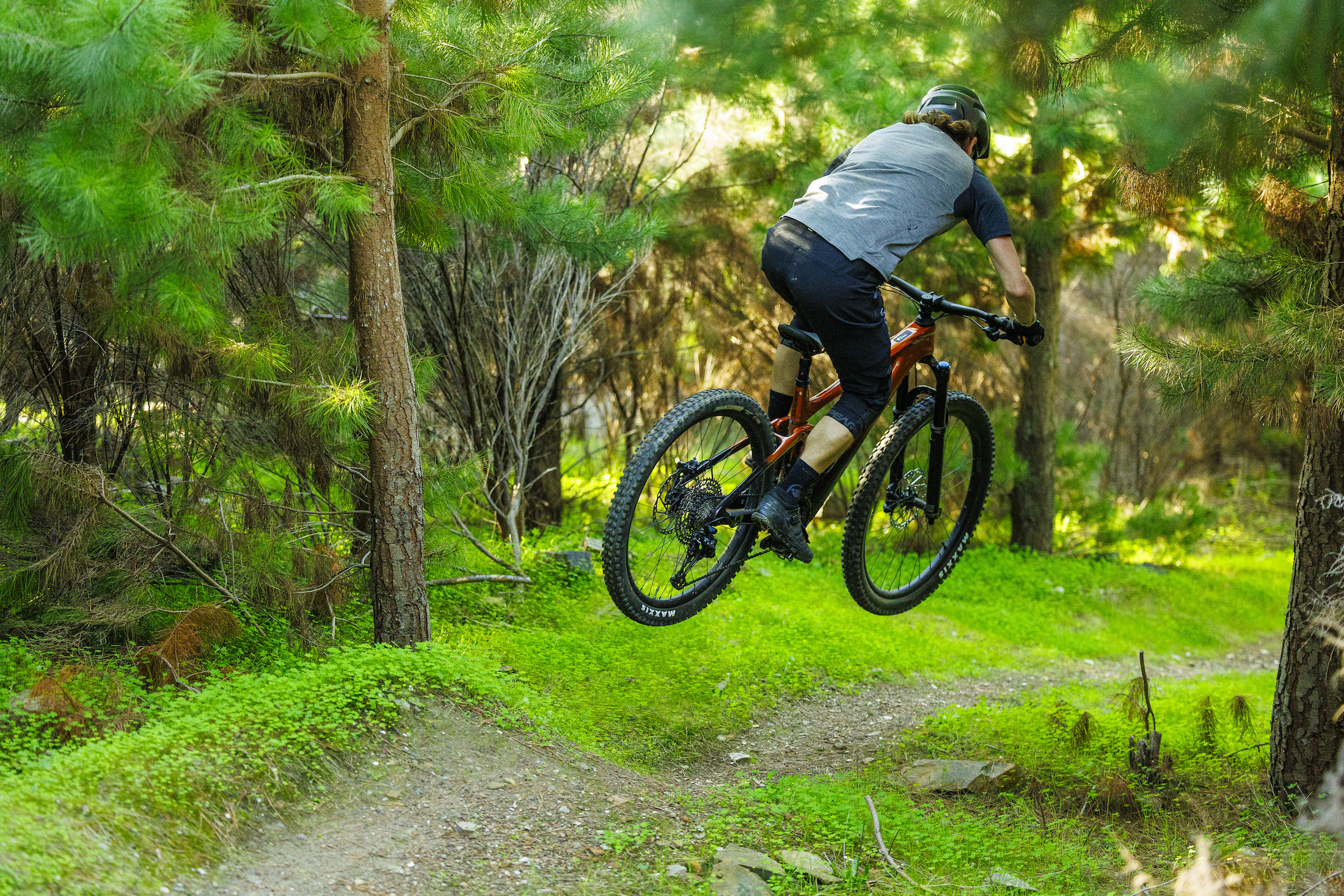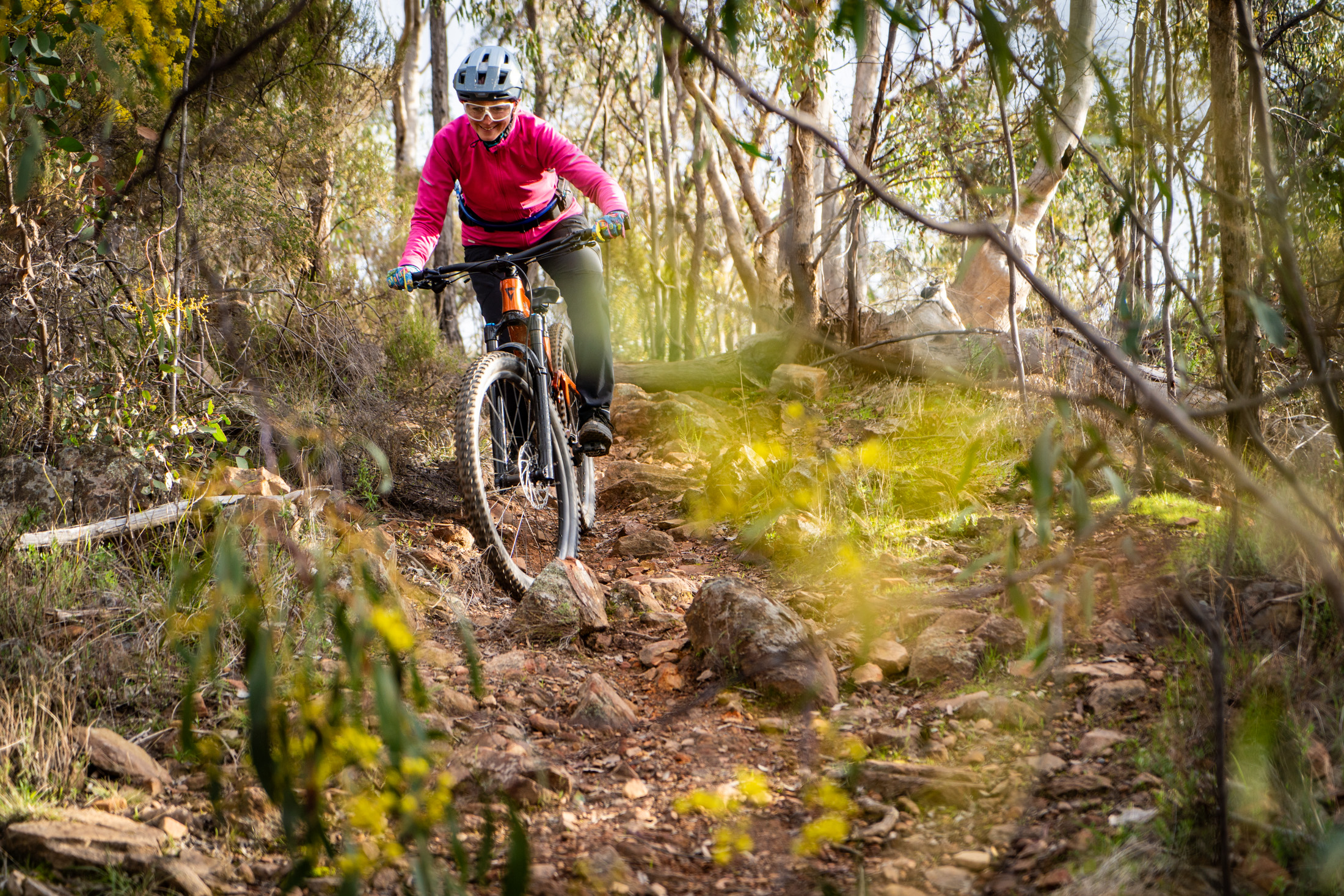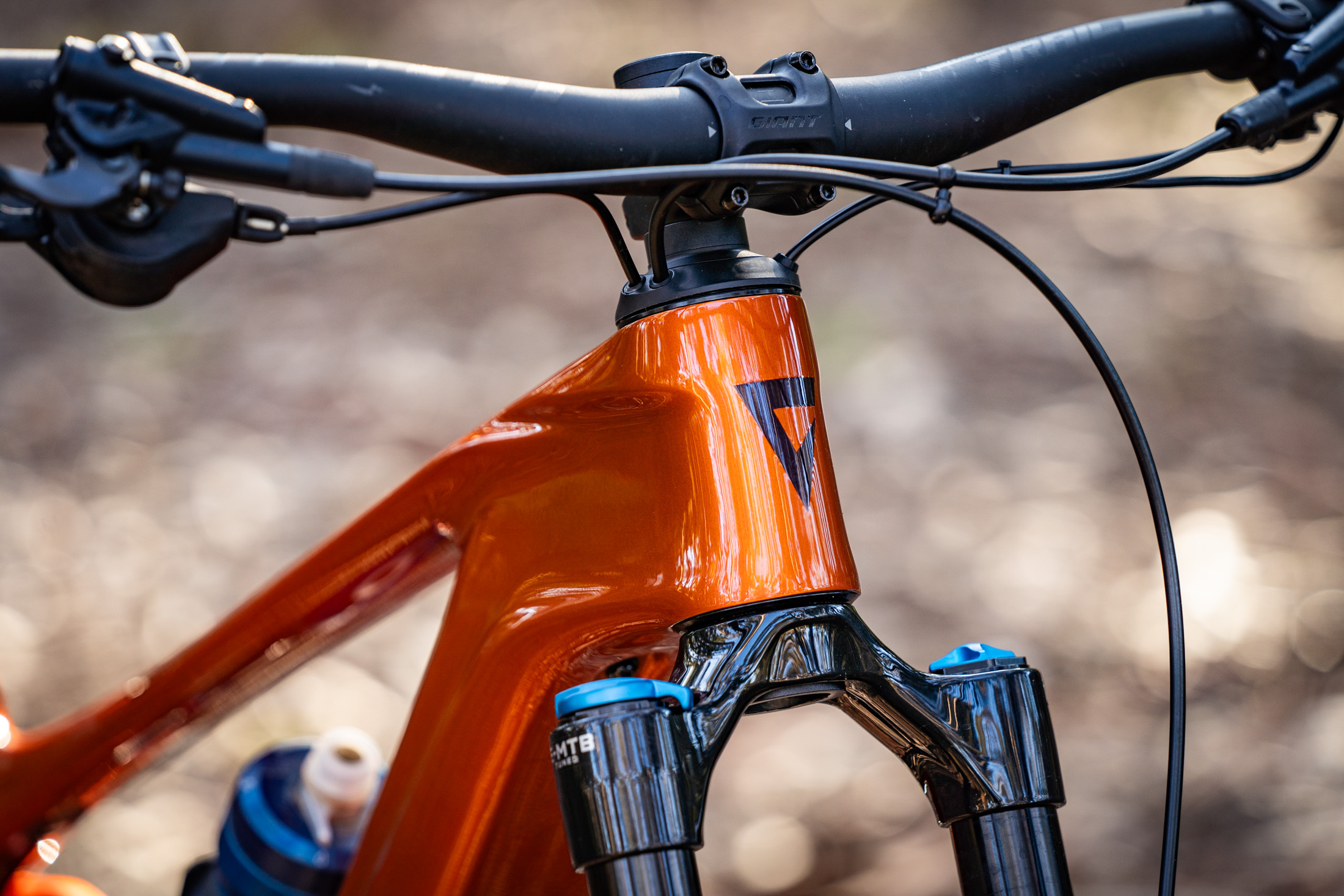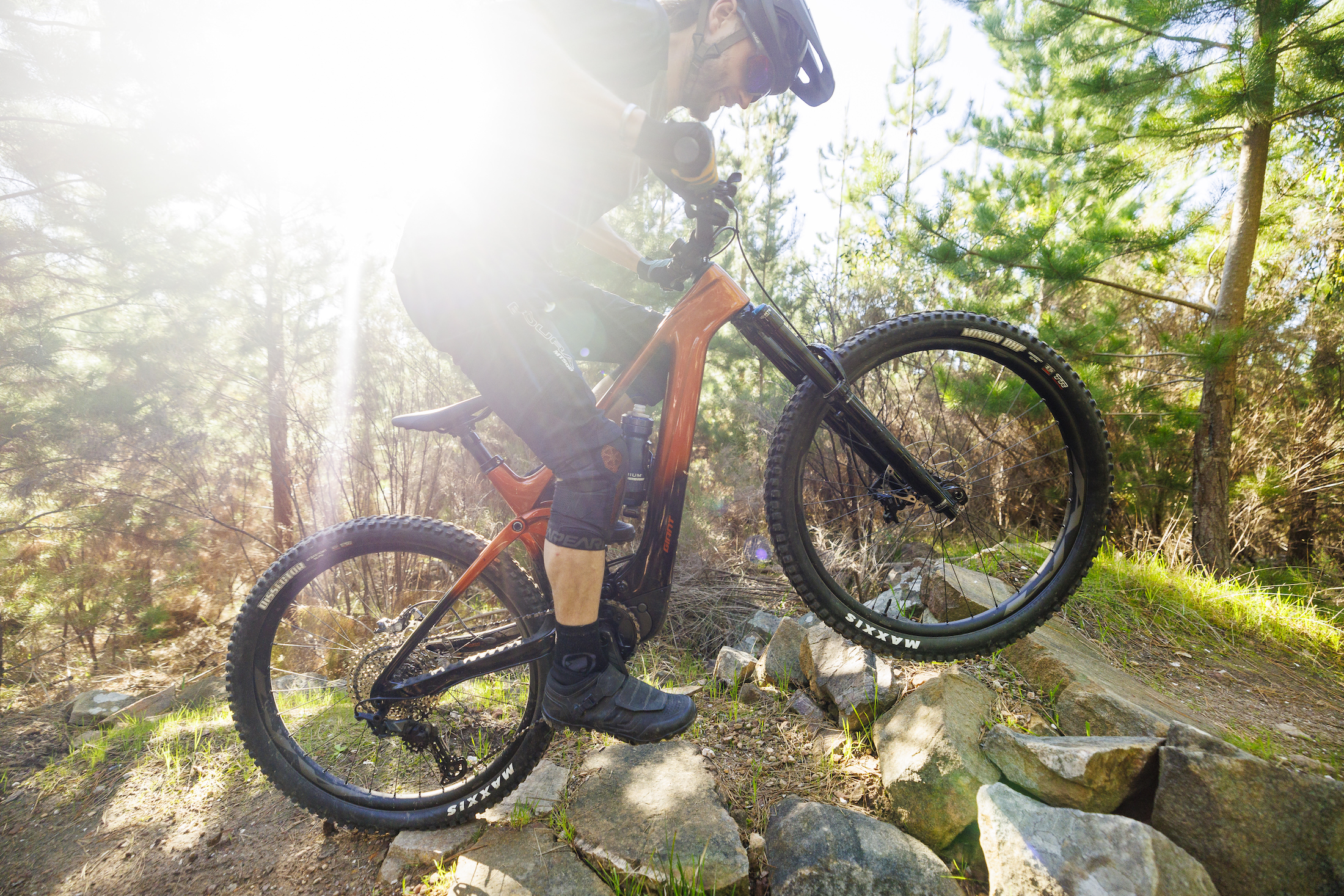Wil & Roz review the Giant Trance X E+ Elite
Now don’t be confused, but the Giant Trance X E+ Elite is actually a brand new electric mountain bike for 2023. It’s the ‘Elite’ part that differentiates this bike from the existing Trance X E+ that we reviewed last year, though there’s a bit more to it than just a confusing name change.
Indeed the Trance X E+ Elite represents the first lightweight e-MTB from Giant, which is a pretty big deal. It features a unique frame, a smaller 400Wh battery and a weight as low as 19kg in its top-end trim. Where things veer off the rails is with the motor, which is the same 85Nm monster you’ll find in the regular Trance X E+ and the Reign E+. This is a key difference to other lightweight e-MTBs on the market that are typically built around a smaller and lower-powered motor.
Does that make it the ultimate all-rounder, or is this curious combination just a confused compromise? We got our hands on the Giant Trance X E+ Elite to find out!
Watch our video review of the Giant Trance X E+ Elite here:
Indeed the handling on the Trance X E+ Elite is one of its strongest suits, with an agile and playful character that makes it a barrel-load of laughs to ride.
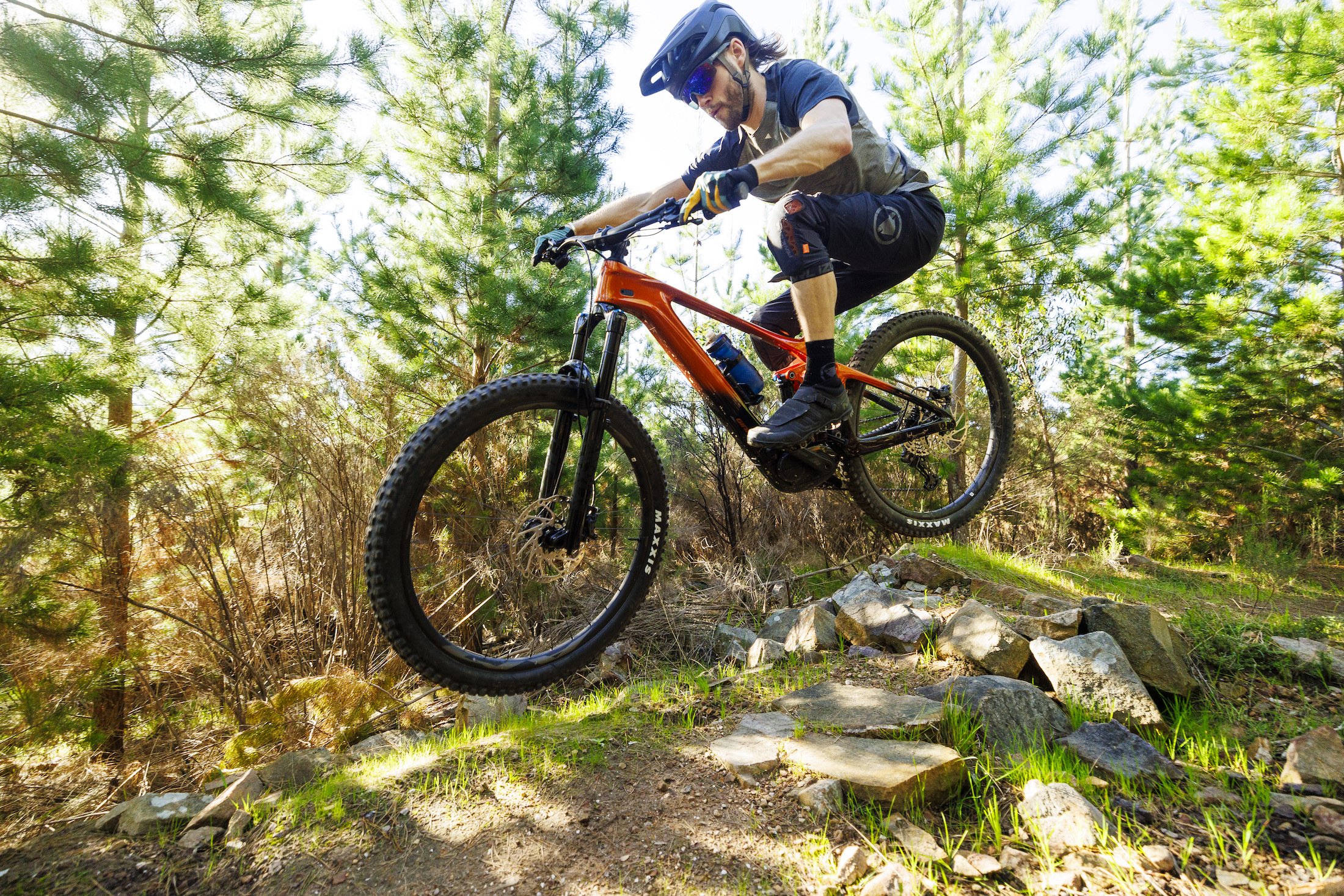
An overview of the Giant Trance X E+ Elite
Equipped with a 150mm fork and 140mm of rear travel, the Giant Trance X E+ Elite is a lightweight e-MTB that’s ready to take on the Specialized Levo SL, Trek Fuel EXe and Orbea Rise.
It features a full carbon frame that’s built around the Maestro dual-link suspension platform and a mixed wheel setup. The 27.5in rear wheel has allowed Giant to make the chainstays much shorter, as in nearly 30mm shorter than the regular Trance X E+. That has a significant impact on handling, which we’ll touch on in a bit.
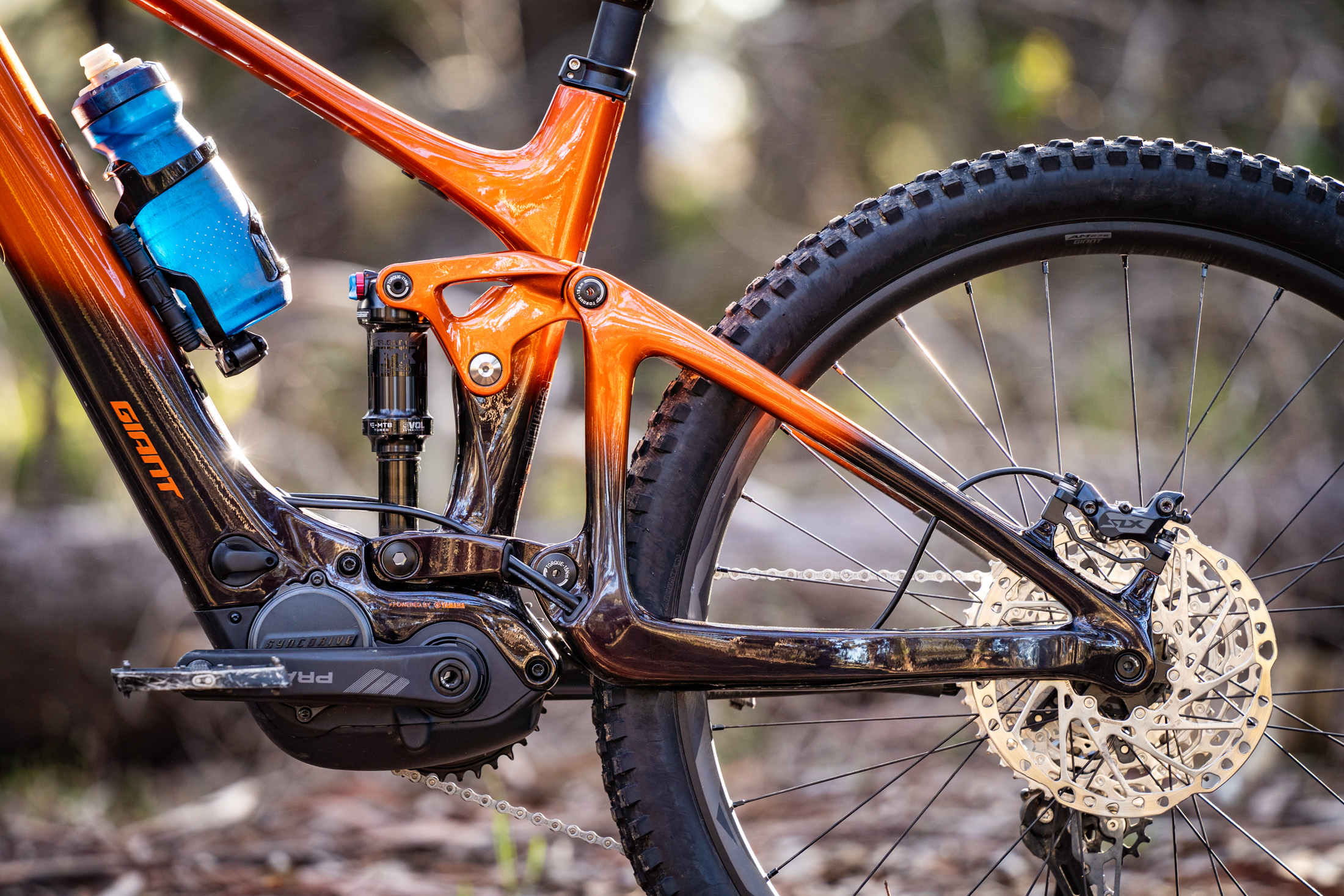
Powering the Trance X E+ Elite is the Yamaha-manufactured SyncDrive Pro 2 motor that delivers up to 85Nm of peak torque. It’s fuelled by a slim Panasonic 400Wh battery that’s bolted securely within the downtube. You can also purchase an aftermarket 200Wh range extender battery to increase total capacity to 600Wh.
Up at the cockpit you’ll find the RideControl Go console within the top tube and a low-profile RideControl Ergo 3 remote that integrates into the left hand grip. There’s also a RideControl app for tuning the motor settings.

What happens to the full-size Trance X E+?
It’s important to note that the existing Trance X E+ range will continue to be available for 2023. Indeed the new Trance X E+ Elite is an addition to the range, not a replacement. We initially found this a bit confusing since the two bikes both have 150/140mm of travel and the same 85Nm motor. Where things differ is with the battery, frame and wheelsize.
The regular Trance X E+ features a much chunkier frame, and that’s because it houses a whopping 750-800Wh battery inside the downtube. It’s equipped with 29in wheels front and rear, and as mentioned above, it has much longer chainstays. As a result, these two bikes offer a unique ride experience that will suit different types of riders. If you’re curious about which would suit you better, hopefully we’ll have answered that question by the end of this review.
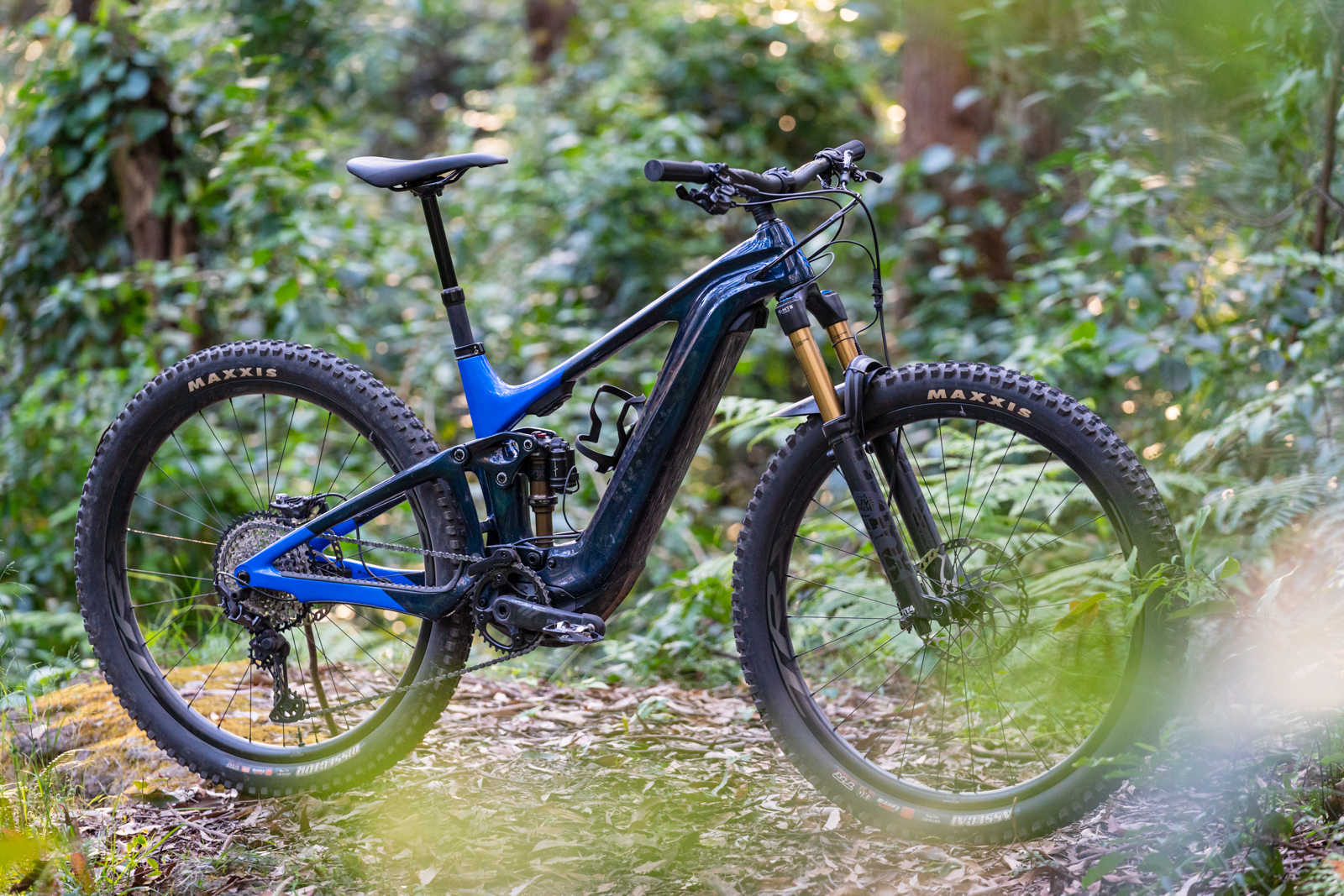
Giant Trance X E+ geometry & size chart
When it comes to the geometry, the new Giant Trance X E+ Elite is pretty close to its full-size sibling. In fact, the 65.8° head angle, 76° seat angle and 457mm reach (Medium) are identical. They both incorporate a two-position flip chip, and putting that into the High position will lift the BB by 10mm and steepen the angles by 0.7°.
As mentioned earlier, the biggest difference between two bikes is the chainstay length. Thanks to the smaller 27.5in rear wheel on the Trance X E+ Elite, the rear centre length comes in at 447mm. Compare that to the whopping 473mm rear centre on the regular Trance X E+.
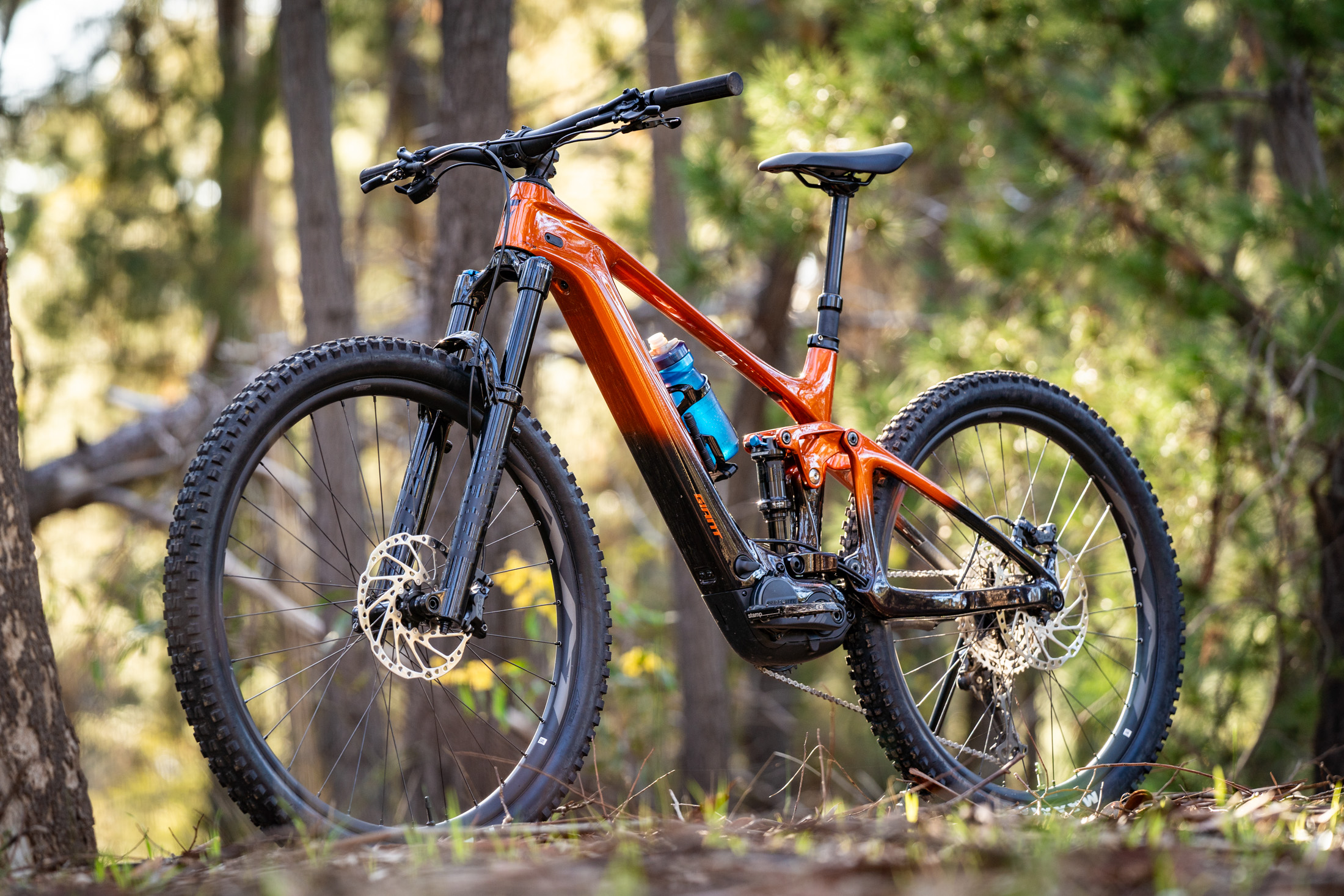
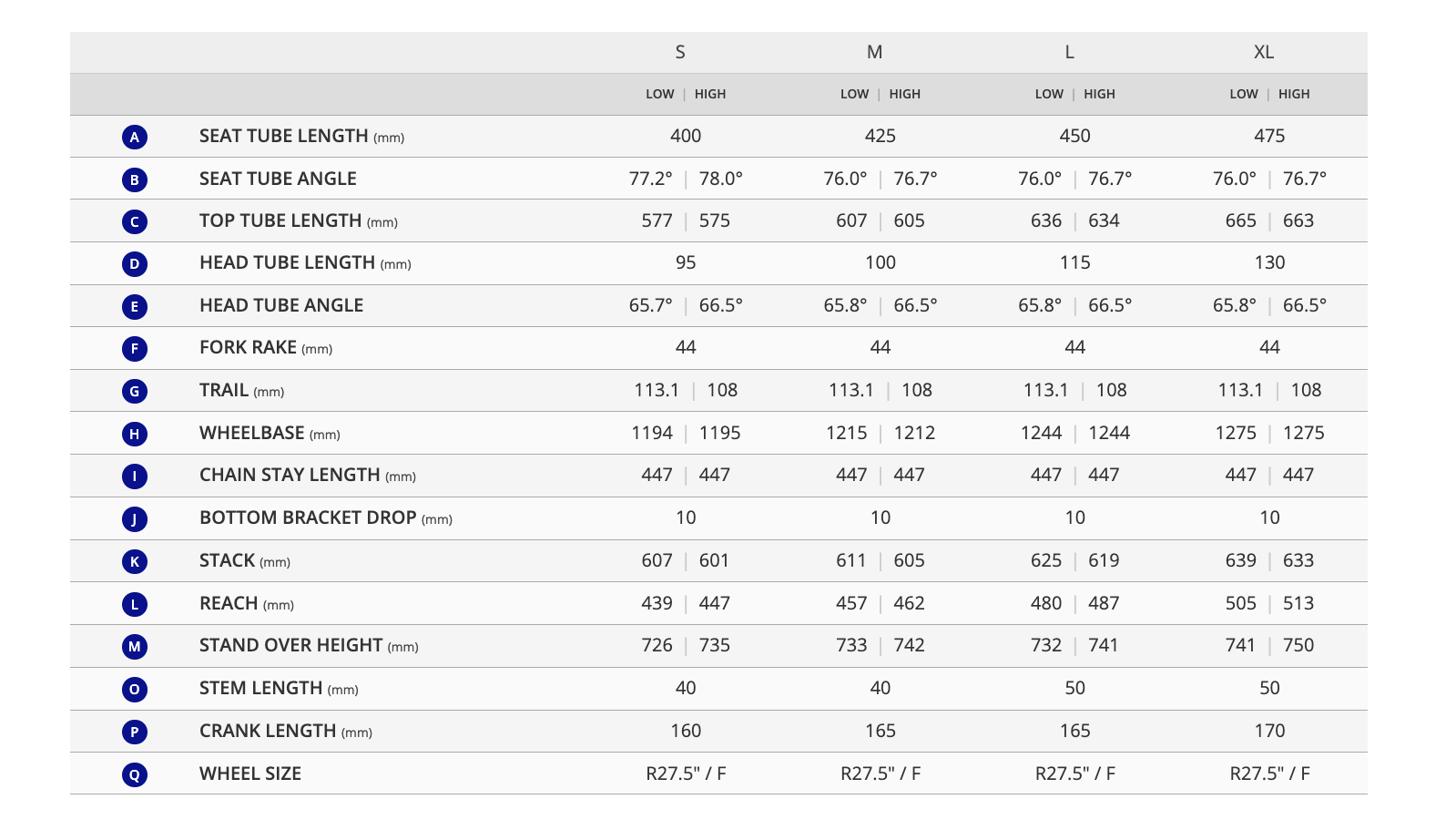
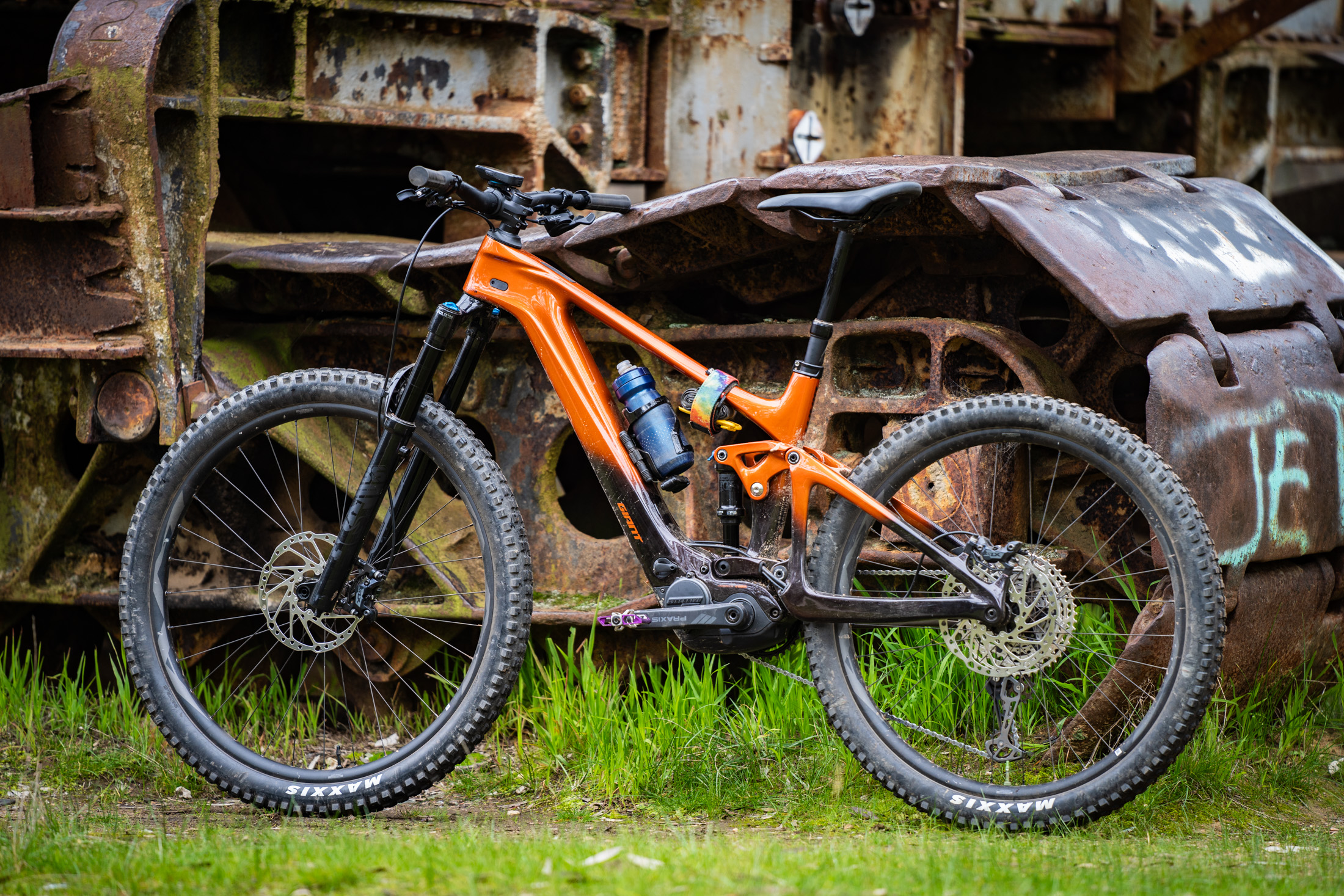
Giant Trance X E+ Elite price & specs
There are four models in the Giant Trance X E+ Elite lineup for 2023. Prices start at $8,799 AUD, go up to a hefty $18,999 AUD. Get a closer look at all the specs and pricing in our detailed first look article.
It’s worth noting that the top two models come with Fox Live Valve electronic suspension. While it is very clever, we’re not totally convinced by Live Valve on an e-MTB, so we requested the next model down that features a regular Fox fork and shock. This bike comes in under $10K, making it a far more practical choice for us to test and review.
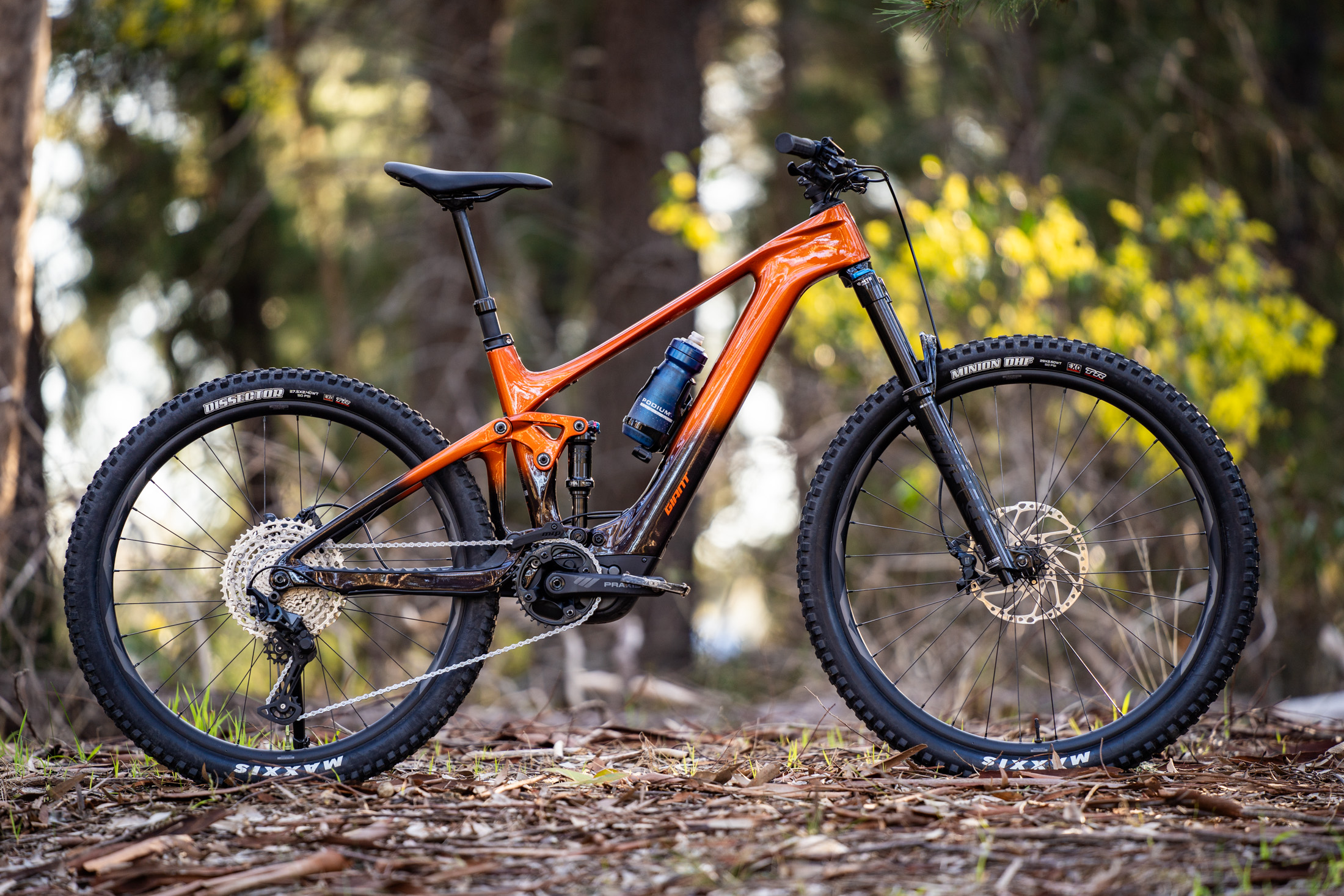
2023 Giant Trance X Advanced E+ Elite 2
- Frame | Advanced Grade Carbon Fibre, Maestro Suspension Design, 140mm Travel
- Fork | Fox 36, Performance Series, GRIP Damper, 44mm Offset, 150mm Travel
- Shock | Fox Float DPS, Performance Series, 185×52.5mm
- Motor | Giant SyncDrive Pro 2, 85Nm
- Battery | Giant EnergyPak 400Wh
- Wheels | Shimano MT410 Hubs & Giant AM Alloy Rims, 30mm Inner Rim Width
- Tyres | Maxxis Minion DHF EXO 29×2.5in Front & Dissector EXO 27.5×2.4in Rear
- Drivetrain | Shimano SLX 1×12 w/Praxis Alloy 36T Crankset & 10-51T Cassette
- Brakes | Shimano SLX 4-Piston w/203mm Rotors
- Handlebar | Giant Contact SL Trail, 780mm Width
- Stem | Giant Contact SL Trail, Length: 40mm (S-M), 50mm (L-XL)
- Seatpost | Giant Contact Switch, Travel: 125mm (S), 150mm (M), 170mm (L-XL)
- RRP | $9,499 AUD
The mullet setup pays big dividends on the trail, helping the bike to dive in and pop out of corners.

Giant Trance X E+ Elite sizing & fit
To suit my height of 175cm and Roz’s height of 165cm, we’ve been testing a Medium size in the Giant Trance X E+ Elite. The cockpit is roomy and comfortable, and weight distribution is nicely balanced with a distinctly trail bike vibe.
I like that the seat angle isn’t crazy steep, and it’s great to see the fork steerer cut long from the factory with plenty of different size headset spacers for dialling in the bar height.
Cable management is tidy thanks to the headset routing, but if you’re really not a fan then you’ll be happy to see a port on the side of the head tube that allows you to route the control lines through the frame instead. The best of both worlds, nice one Giant!
The contact points are all fine, though I wouldn’t mind a bit more travel than the stock 150mm dropper post. The post can be fully inserted into the frame thanks to the straight seat tube, which gives you options for fitting a longer dropper if you wish.
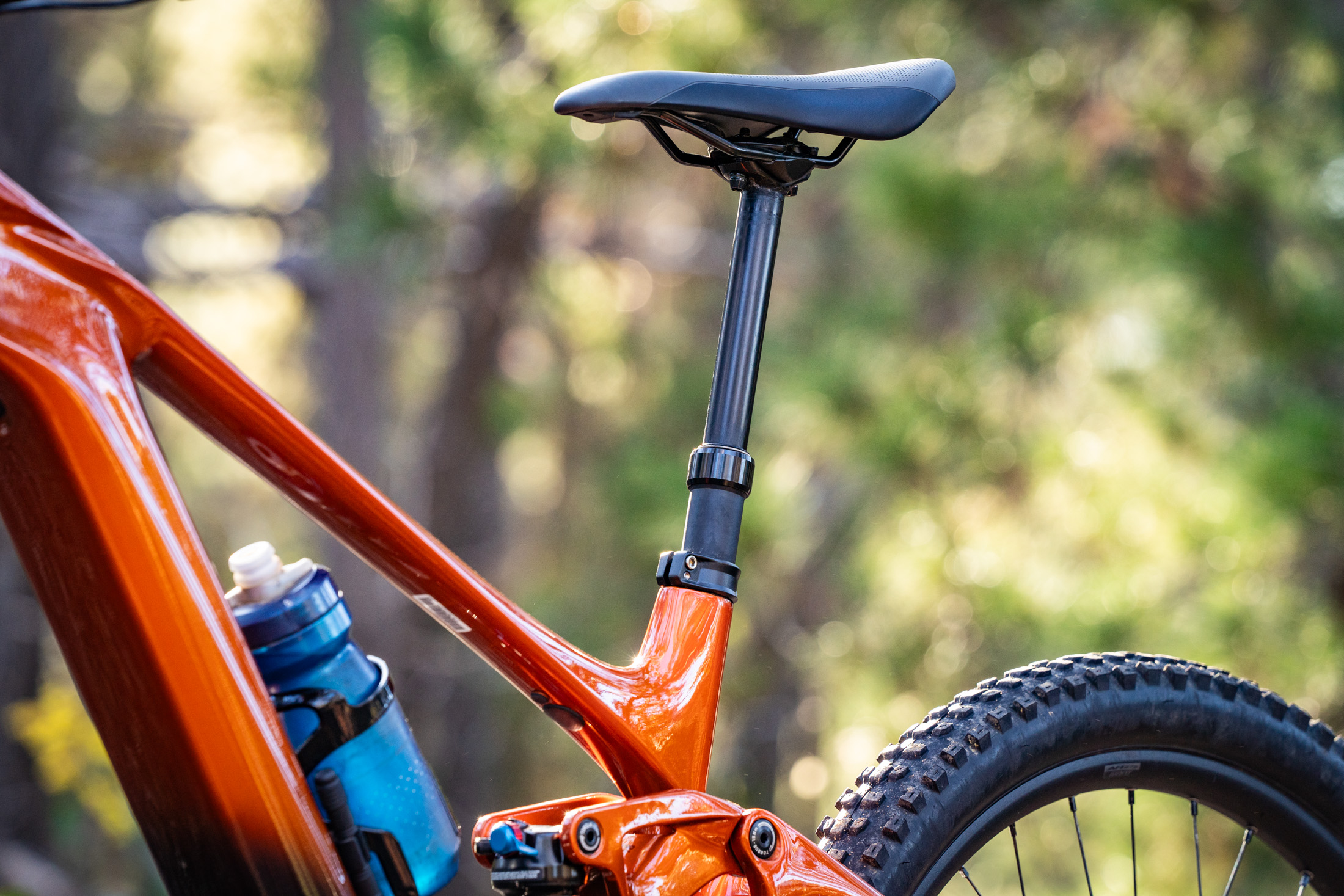
Suspension setup
It’s recommended to start with 30% sag for the shock on the Giant Trance X E+ Elite. For my 68kg riding weight I needed 175psi, and I set the rebound damping a couple of clicks faster than halfway (9/14 clicks). The shock comes with a 0.6³ volume spacer as standard, so there are options to tune the progression depending on rider weight and preference.
I set up the Fox 36 as usual with 78psi in the air spring. It came with three volume spacers as standard, which I found was a little too much for my liking. I removed one volume spacer, which gave the fork a plusher and more linear feel with greater access to all of the travel. I set rebound damping a click faster than halfway (11/20 clicks).
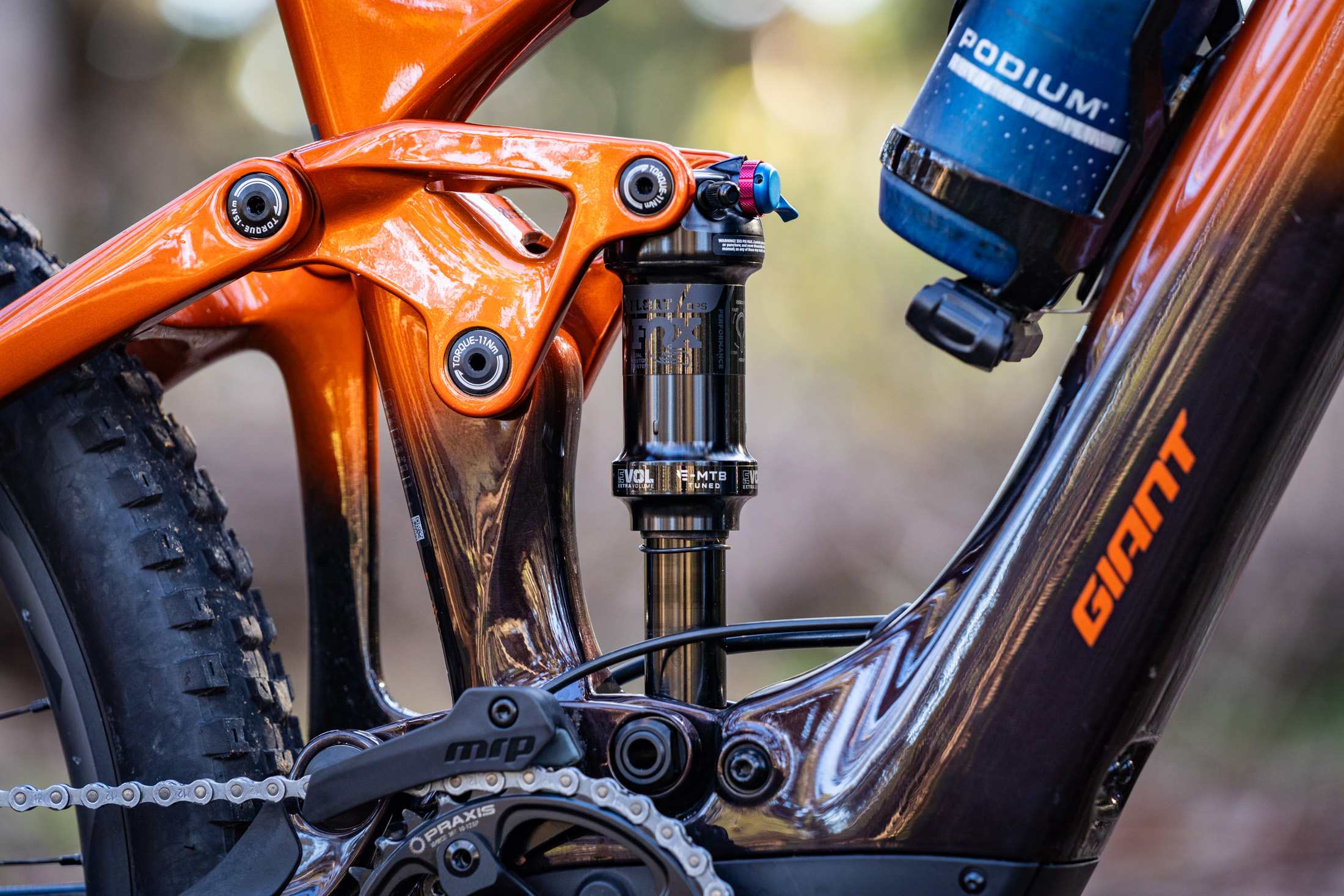
Giant Trance X E+ Elite weight
Confirmed weight for our Giant Trance X Advanced E+ Elite 2 test bike is 20.26kg. That’s without pedals and with the tyres set up tubeless.
It’s a higher figure than other lightweight e-MTBs that we’ve tested, which have typically come in closer to 18kg.
It’s worth noting that the top-end Trance X Advanced E+ Elite 0 is claimed to weigh bang-on 19kg. That bike does feature an extremely high-end build kit however, with Zipp 3Zero Moto wheels, carbon Praxis cranks, and a one-piece SLR cockpit. It also cheats a little by electing for lighter tyres with a Maxxis Dissector and Rekon combo.
The rest of the Trance X E+ Elite range, including our test bike, get a Minion DHF on the front and a Dissector on the rear. They still use lightweight EXO casings though, so you’ll need to run high pressures or fit an insert in order to avoid pinch-flatting. For maximum protection, I fitted a CushCore Pro insert into the rear wheel. Tyre pressures ranged from 21-23psi up front to 25-27psi for the rear.
Testing the Giant Trance X E+ Elite
It wasn’t exactly smooth sailing off the bat, with some puzzling required to get the Giant Trance X E+ Elite dialled in.
On the very first descent the bike felt unsettled and somewhat tall. It turned out the flip chip was set in the High setting, so I whipped out a 5mm hex key to undo the bolts and reorient the chip in the Low position.
This made a huge difference, with the BB dropping 10mm and the head angle slackening out by 0.7°. The bike immediately felt better, sitting lower to the ground and offering greater stability.
I did find I was clipping the pedals a bit more due to the lower BB, so I added 10psi to the shock to decrease sag to 28% and slowed the rebound damping down by a click. This lifted the dynamic ride height to increase pedal clearance, while also providing a little more suspension support.

Motor tuning on the Giant Trance X E+ Elite
The other issue I encountered early on was with the motor on the Giant Trance X E+ Elite. Even in the lower assist modes it was way more powerful than I expected, causing me to nearly loop out several times when heading up the first steep climb.
Upon downloading the RideControl app, it turned out the maximum torque setting was set to the full 85Nm for each assist mode. This meant it was really easy to achieve maximum power out of the motor, and it also made it possible to drain the battery quite quickly.
Once paired to the app, I reset the torque limits as per Giant’s recommendations;
- Eco – 30Nm
- Tour – 40Nm
- Sport – 50Nm
- Active – 60Nm
- Power – 85Nm
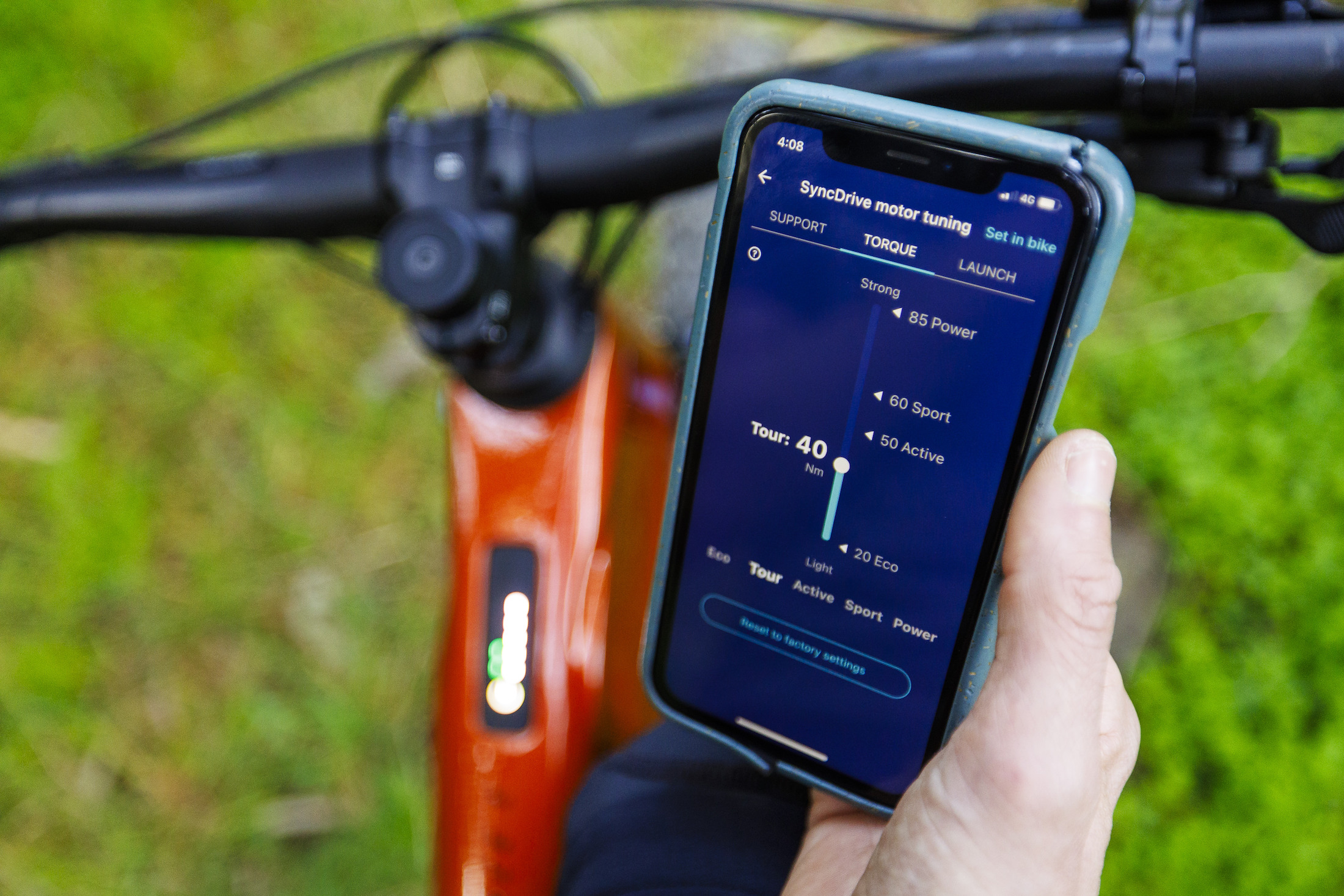
In addition to tuning the peak torque, the app also allows you to tune the Support Level and the Launch Control setting of each mode. This gives you a pretty wide scope for tweaking the motor’s performance to your preference.
What’s good?
Once dialled in, the Giant Trance X E+ Elite has impressed us with its excellent handling. We were already big fans of a mullet setup for an e-MTB, and this bike has only further cemented our opinion.
It represents a pretty dramatic improvement over the existing Trance X E+, with the shorter chainstays offering far greater balance that doesn’t force as much of your bodyweight over the front wheel. It’s much better on steep descents, with a welcome increase in arse-to-tyre clearance over drops and jumps.

The smaller rear wheel also makes it easier to initiate corners, making the Trance X E+ Elite more manageable on tight and twisty trails. Here it rides light on its feet, buoyed by the relatively light and fast-rolling tyres. It’s quick and agile, and never demands a whole lot from you in terms of handling input.
As we’ve come to expect from Giant’s Maestro platform, the suspension is beautifully smooth and consistently active. This helps you to float over loose and rocky terrain while maximising traction through the turns. The rear linkage still offers a decent amount of pop when jumping, and it squats nicely into its travel when pulling a manual.
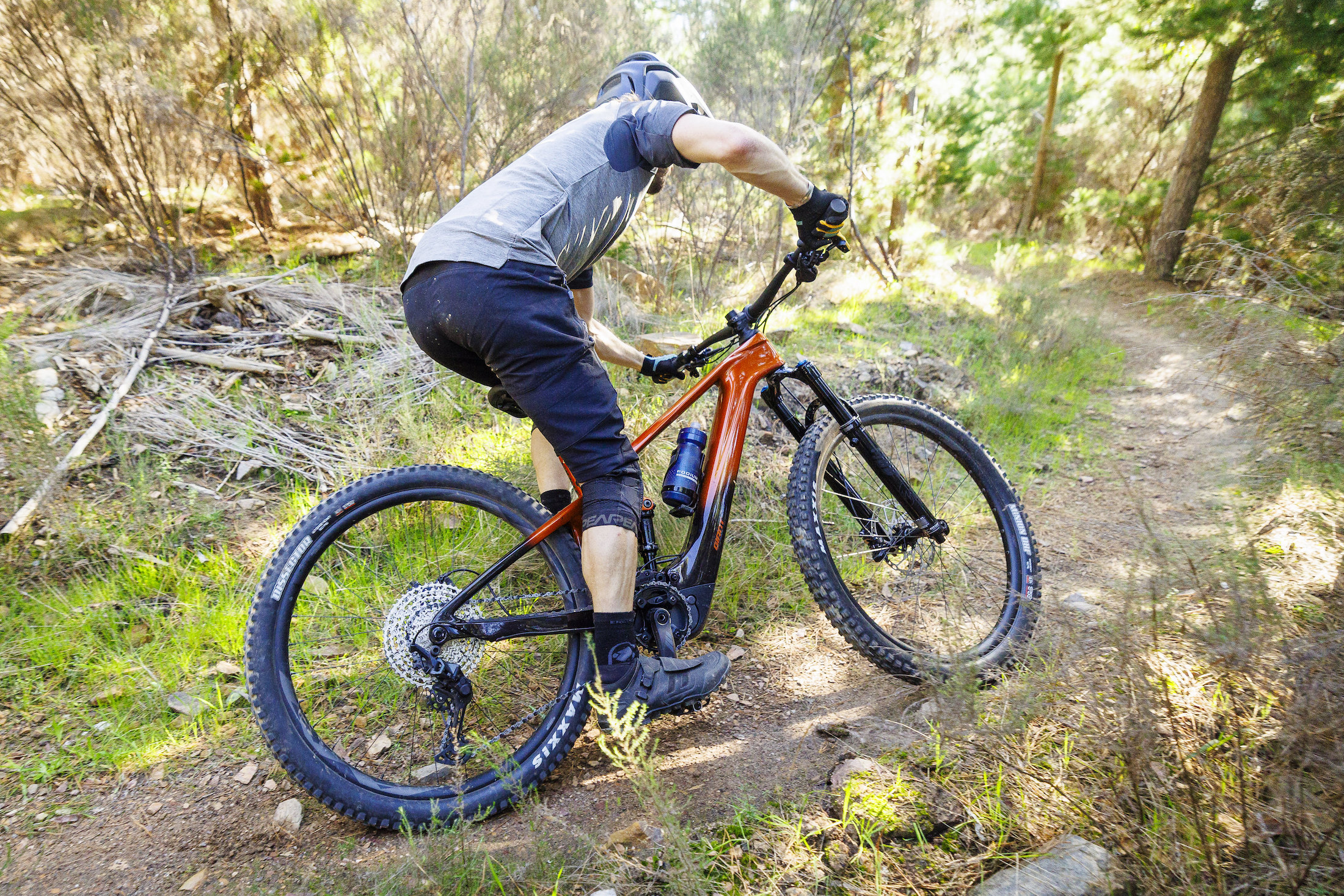
There is noticeable pedal bob with the motor turned off. This indicates that it’s been tuned for compliance and grip rather than efficiency, which is just fine from our perspective.
While traction is good on hardpack trails, the Dissector can struggle on really loose and sketchy tech climbs. The seated position is otherwise good and the motor delivers heaps of power, though the short rear end and 27.5in wheel can make it feel a little tippy on steeper gradients. Running the flip chip in the High setting would certainly help its technical climbing performance, though in general the Trance X E+ benefits a rider with a more active riding style, encouraging you to move around the cockpit to push and pull the bike over awkward features.
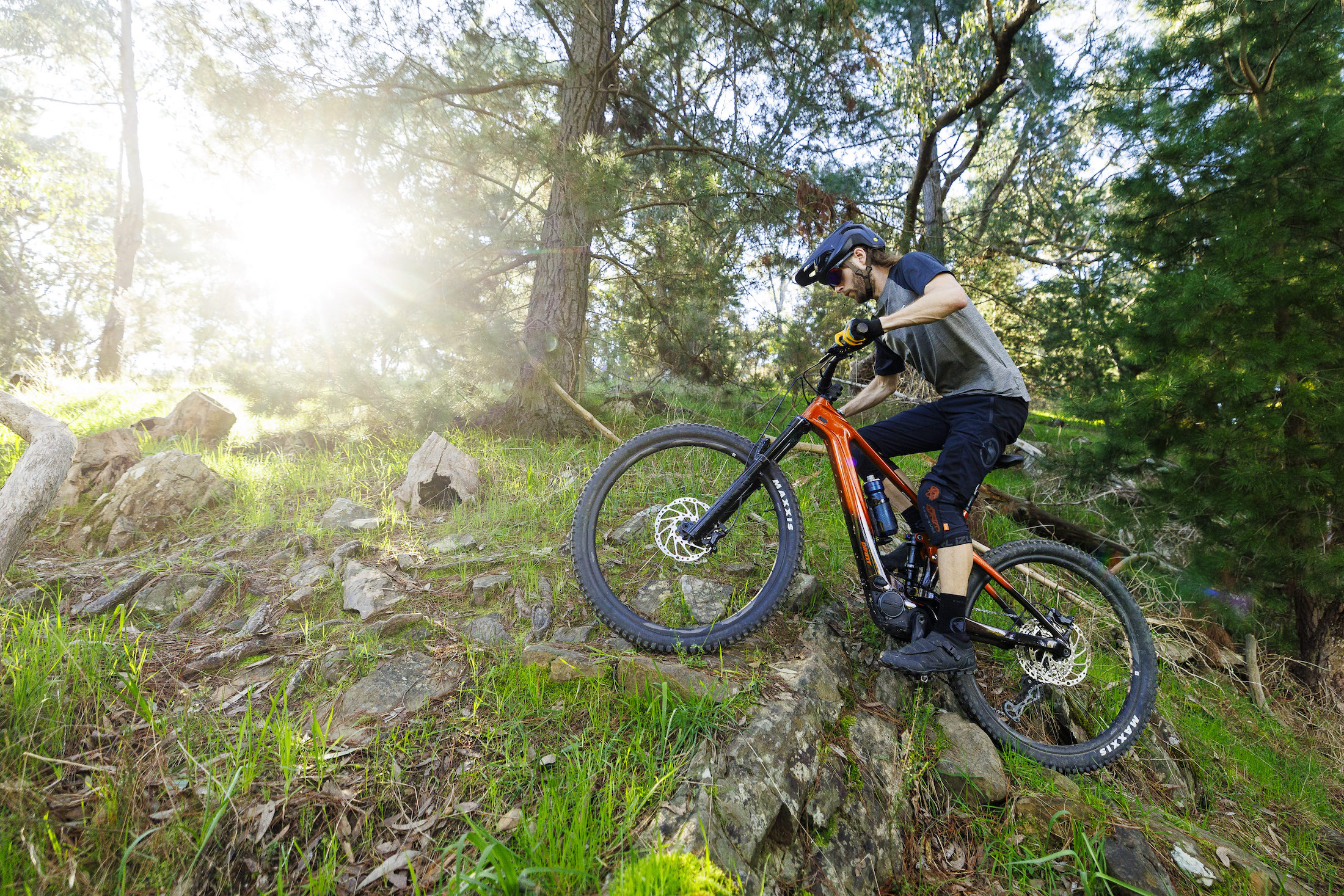
What does it struggle with?
Although the handling and suspension are excellent, the Giant Trance X E+ Elite isn’t a total steamroller on the descents.
The head angle is on the steeper side, so it feels more like an all-round trail ripper rather than an enduro smasher. I think it’s appropriate for the type of bike that Giant is trying to make, though your perspective may vary depending on your local terrain.
It you were looking to expand its descending capability, it’s worth noting that the frame will handle up to a 160mm travel fork. The cheapest option would be to purchase an air shaft and extend the Fox 36 from its stock 150mm of travel. This would slacken the head angle and lift the BB slightly, and that’d allow you to run a touch more shock sag to compensate.

On that note, I did manage to bottom out the shock on a couple of occasions. Heavier riders and frequent flyers will want to consider fitting a bigger volume spacer to amp up end-stroke support. Upgrading the tyres to thicker casings and stickier rubber would also go a long way to improving grip and stability on rough terrain.
Smart Assist ain’t so smart
While the SyncDrive Pro 2 motor performed a lot better after tweaking the maximum torque settings in the RideControl app, it can still feel quite peaky in certain situations.
When you’ve stopped on the trail and are resting your feet on the pedals, you can actually feel the motor wanting to apply power. The torque sensor is so sensitive that just the weight of your leg is enough to make the motor pulse and lurch the bike forward. I eventually got used to it, but it’s still disconcerting.
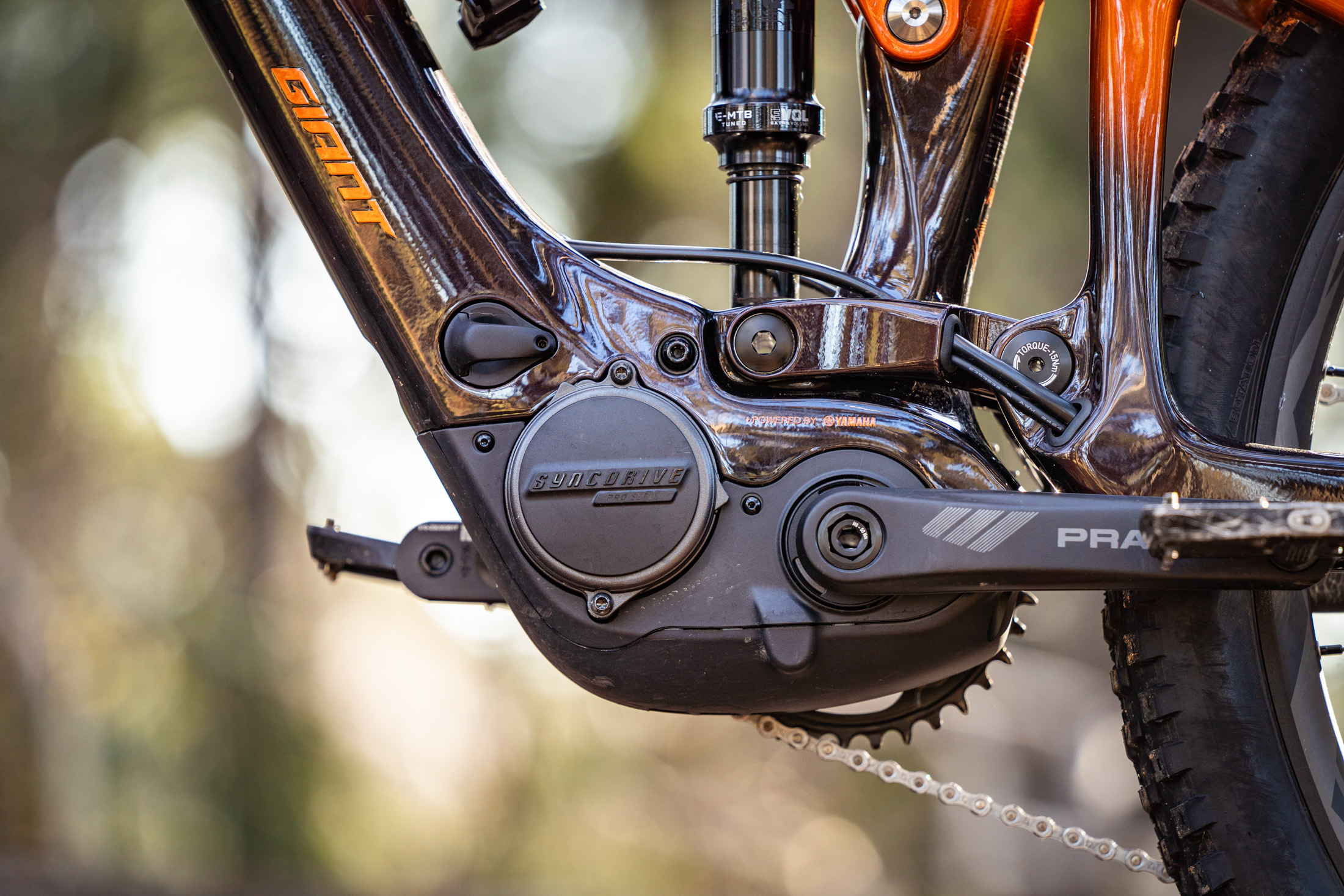
The motor’s hyper responsiveness is particularly apparent in the Smart Assist mode. This is Giant’s adaptive setting, similar to Bosch’s eMTB and Shimano’s Trail mode. It’s designed to adapt the motor’s output based on the rider’s input, cadence, speed, and even the gradient of the trail. It sounds clever, but on the trail it isn’t great.
In this mode the motor is totally unpredictable, with the power output changing dramatically from ‘not much’ to ‘full throttle’. I could never quite work out what it was going to do, with the change in acceleration happening far too rapidly and in situations where I wasn’t expecting.
It takes very little pedal input to access the full 85Nm of torque, and as a result the Smart Assist mode can drain the battery quite quickly. On one ride I got just 32km and 428m of elevation gain before the battery went flat. That’s not great, especially as I’m a fairly light rider.
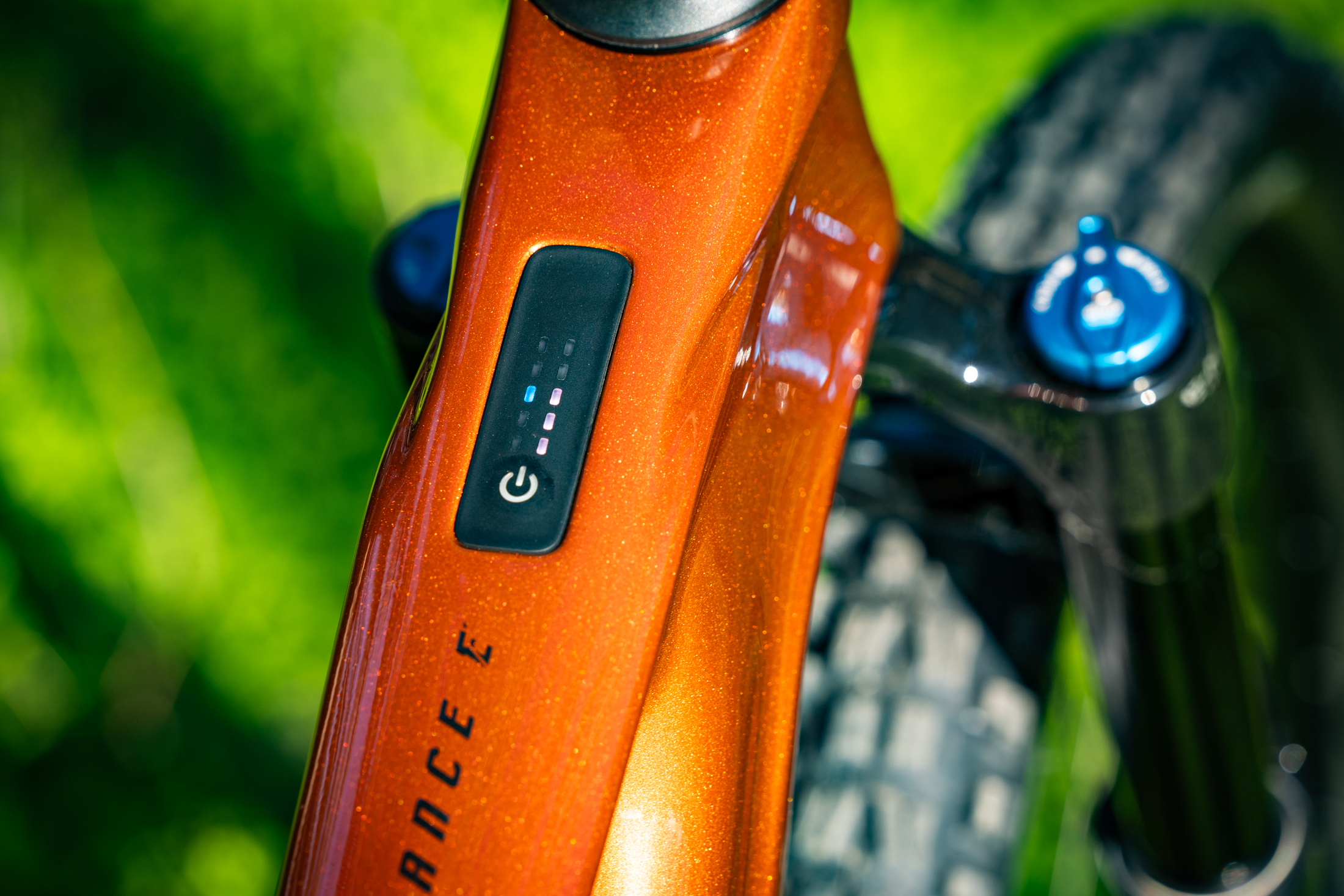
Needless to say I much preferred the manual modes, though annoyingly the system defaults to the Smart Assist mode every time you turn the bike on. That’s not ideal, especially for an inexperienced rider who may be unfamiliar with the available settings.
In the end I found the Tour mode (with the maximum torque limited to 40Nm), to be a good match for the Trance X E+ Elite and my weight. In this setting the motor is much smoother and way more predictable. It offers plenty of power and support, but not so much as to cause me to loop out on the climbs. It also allowed me to get a good amount of range.
Range testing on the Giant Trance X E+ Elite
If you’re riding the Giant Trance X E+ Elite in the higher assist modes, it doesn’t take long to rinse the 400Wh battery. To get the most out of this bike, you really need to make use of the lower powered settings in order to maximise range.
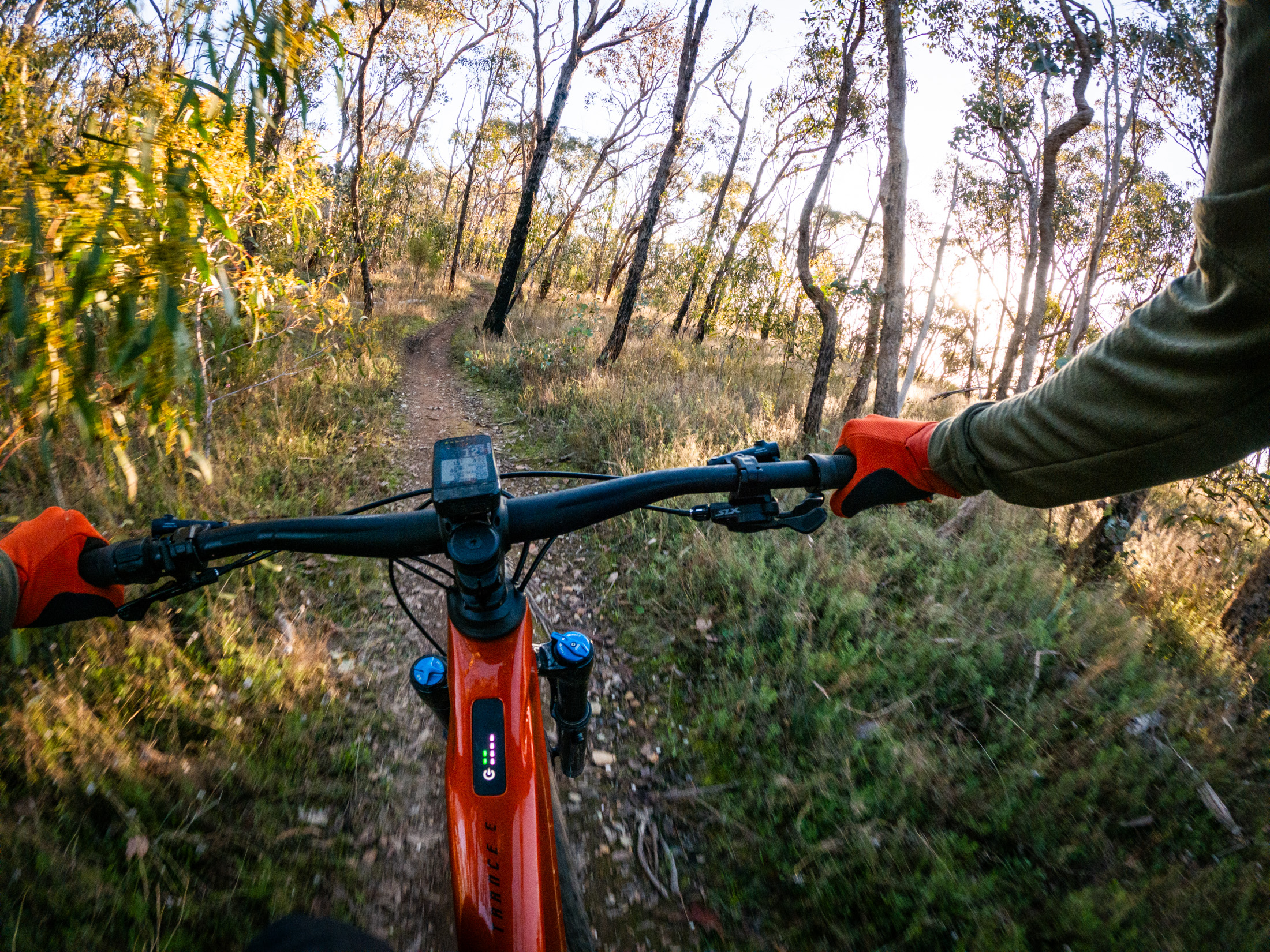
I found using the Tour mode would typically net me around two hours of off-road riding, with the metrics varying depending on the terrain. A flowier XC-based ride saw me hitting 40km and 1,000m of elevation gain before the battery ran flat, while tackling bigger mountain trails I was able to rack up 32km with 1,300m of elevation gain.
To get a more objective comparison with some of the other e-MTBs I’ve reviewed, I put the Giant Trance X E+ Elite through our standardised range test. As always, I set the motor set to its most powerful mode. Here’s how it fared;
- Norco Sight VLT (Shimano EP8, 900Wh Battery) – 2,478m climbing
- Canyon Spectral:ON (Shimano EP8, 900Wh Battery) – 2,451m climbing
- Cube Stereo Hybrid 160 (Bosch Gen 4, 750Wh Battery) – 2,320m climbing
- Rocky Mountain Altitude Powerplay (Dyname 4.0, 720Wh Battery) – 2,108m climbing
- Scott Patron (Bosch Gen 4, 750Wh Battery) – 2,079m climbing
- Orbea Rise (Shimano EP8-RS, 360Wh Battery) – 1,388m climbing
- Trek Fuel EXe (TQ-HPR50, 360Wh Battery) – 1,312m climbing
- Specialized Levo SL (SL 1.2, 320Wh Battery) – 1,307m climbing
- Giant Trance X Advanced E+ Elite (SyncDrive Pro 2, 400Wh Battery) – 1,057m climbing
- Specialized Kenevo SL (SL 1.1, 320Wh Battery) – 1,053m climbing
Heavier riders using the higher assist modes will find themselves rinsing the 400Wh battery quickly. That makes the range extender more of a necessity, though at that point you may be better off looking at a traditional full-powered e-MTB instead.
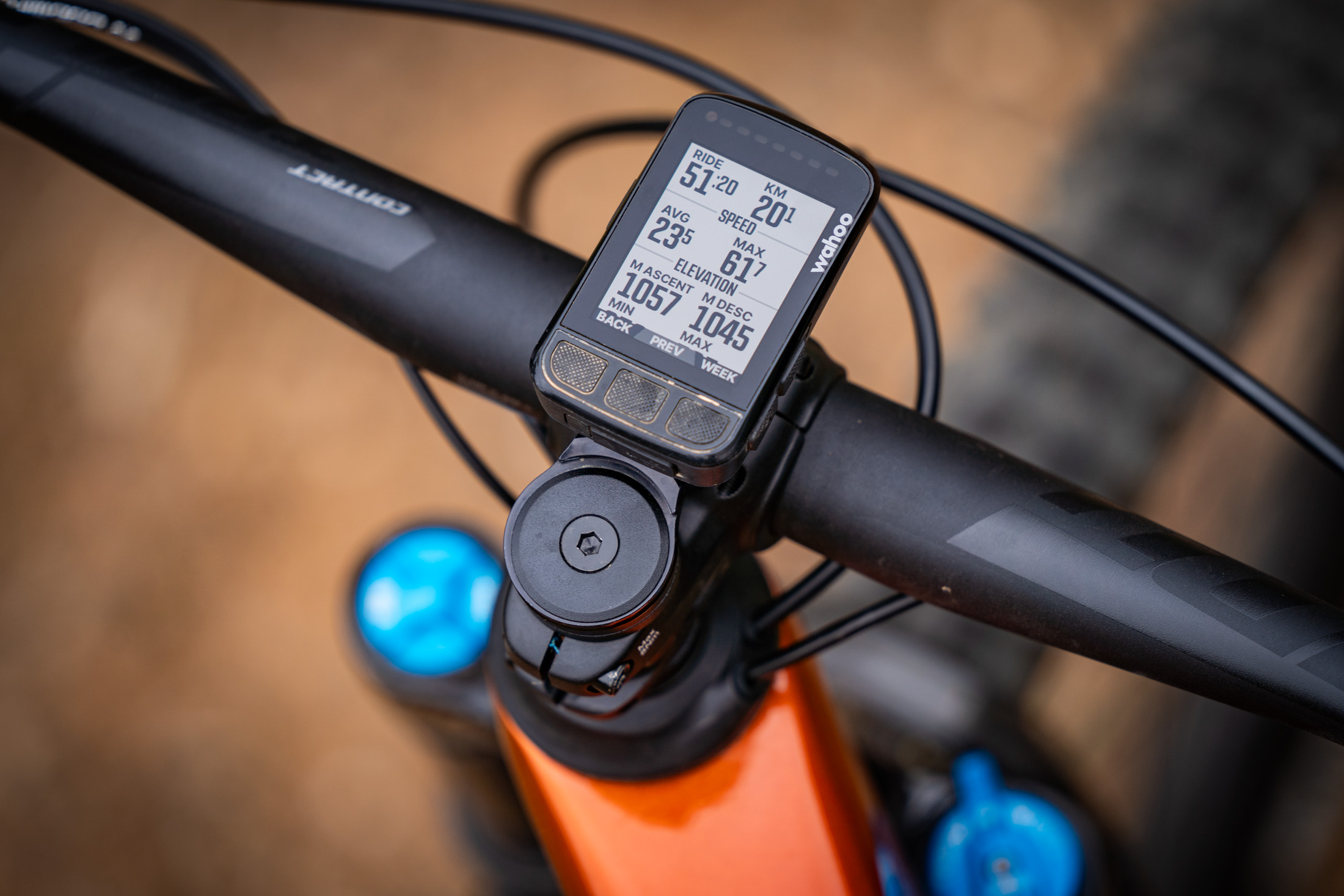
As you’ll see in that list, the Trance X E+ Elite fell short of its three main rivals; the Specialized Levo SL, Trek Fuel EXe and Orbea Rise. That’s no surprise given it has a much more powerful motor, and it lead to a significant difference in climbing speed.
Whereas those other lightweight e-MTBs would climb at a speed of around 14 km/h, the Trance X E+ Elite went uphill like a bloody rocket, ticking over at nearly 20km/h up an average gradient of 10%. It was quicker than the Canyon Spectral:ON with its Shimano EP8 motor, and not far off the Scott Patron with its Bosch motor.
Based on those numbers, if I was to repeat the range test with the motor’s peak torque output limited to 50Nm (to put it at the same level as the motors on the Levo SL and Fuel EXe), the Trance X E+ would theoretically achieve close to 1,800m of elevation gain. That is considerably more than its competitors. Needless to say, what assist mode you use and how you tune the motor will have a radical impact on range.
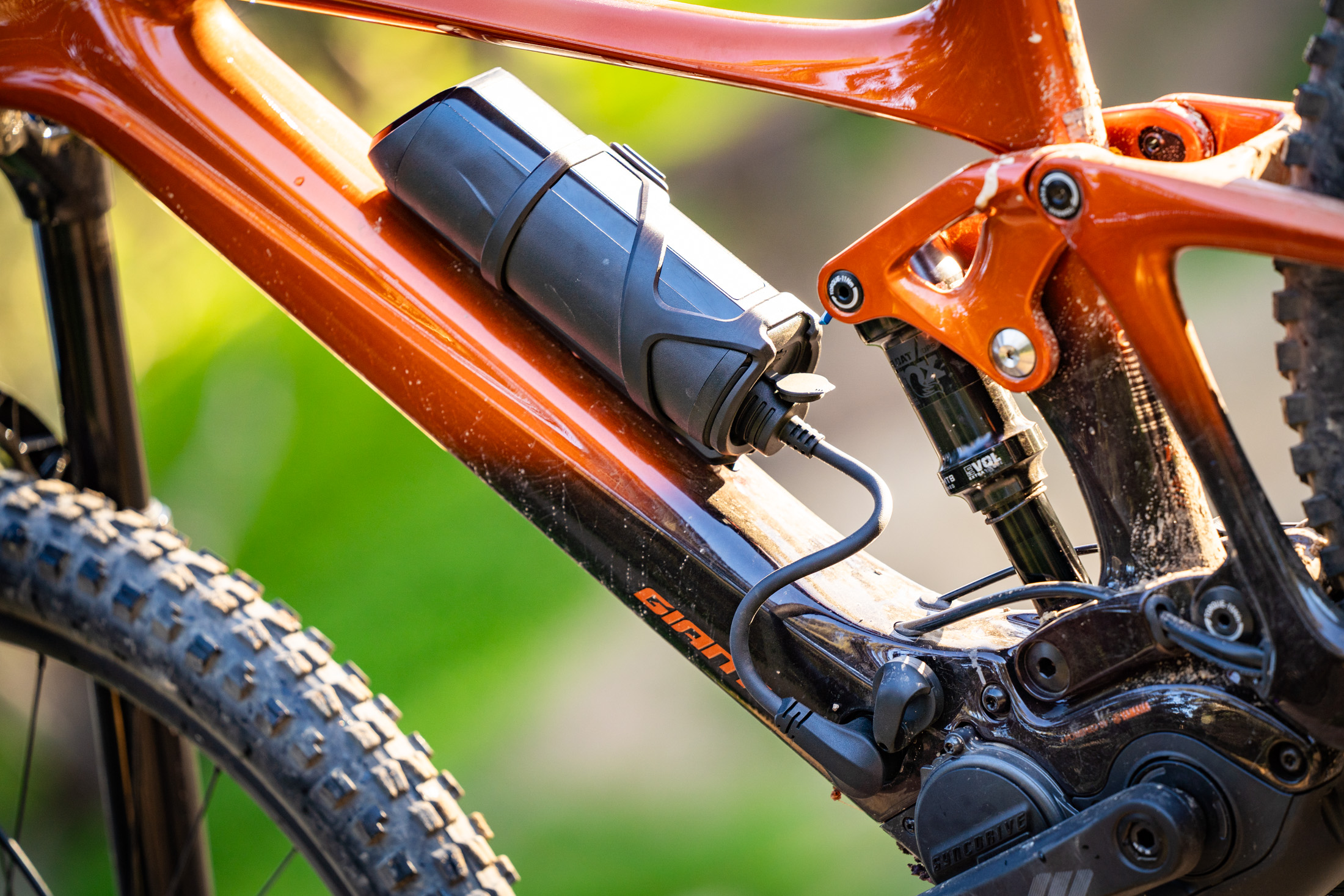
What about the Range Extender?
Now at this point you might be wondering what the point of having a full-powered e-MTB is if you’re just going to throttle the motor back. For me personally, I preferred the lower assist modes anyway, and found the internal 400Wh battery was sufficient for most rides.
If you’re keen to open up your options with using the higher-powered modes on longer rides however, the obvious answer is the range extender battery. This 200Wh battery increases range by 50%, providing a total capacity of 600Wh that gets the Trance X E+ Elite closer to a classic full-powered e-MTB.
Giant sells the range extender battery for $970 AUD, though for some reason it supplies the necessary extension cord and mounting cage separately for an extra $170 AUD. That’s cheeky, and it means you’re actually looking at $1,140 AUD for the full setup.
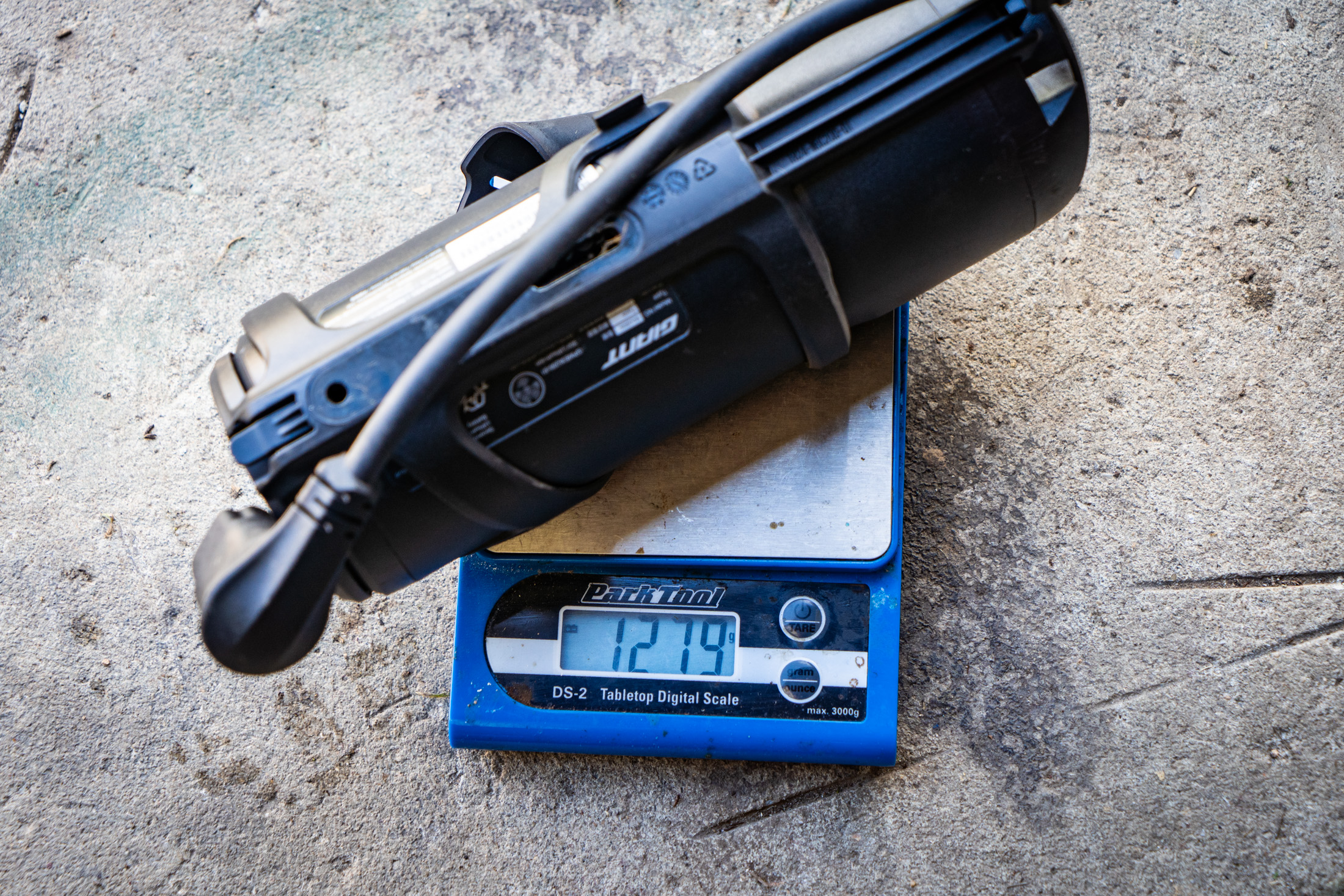
The range extender weighs 1,279g including the cage and extension cable. It’s easy to fit, though it does mean you’ll be giving up the standard bottle cage. Once plugged in, the system recognises the two batteries as a single unit. This means the battery indicator on the top tube and the battery percentage in the app is reading off a total capacity of 600Wh.
Curiously the system is programmed to drain the main battery first before switching over to the range extender, which seems like the opposite of what you would want. We’re told that this is due to there being half the number of cells in the range extender, which means it will be under more strain when the motor is drawing maximum power in the higher assist modes. As a result, the range extender has a shorter expected lifespan of 1,000 charge cycles (compared to 2,300 charge cycles for the main battery, before it reaches 50% capacity).
While there is a little extra noise from the range extender moving around in the cage, we found it to be secure with the extension cord remaining tucked out of the way. An additional rubber strap is included for securing the cable further if need be.
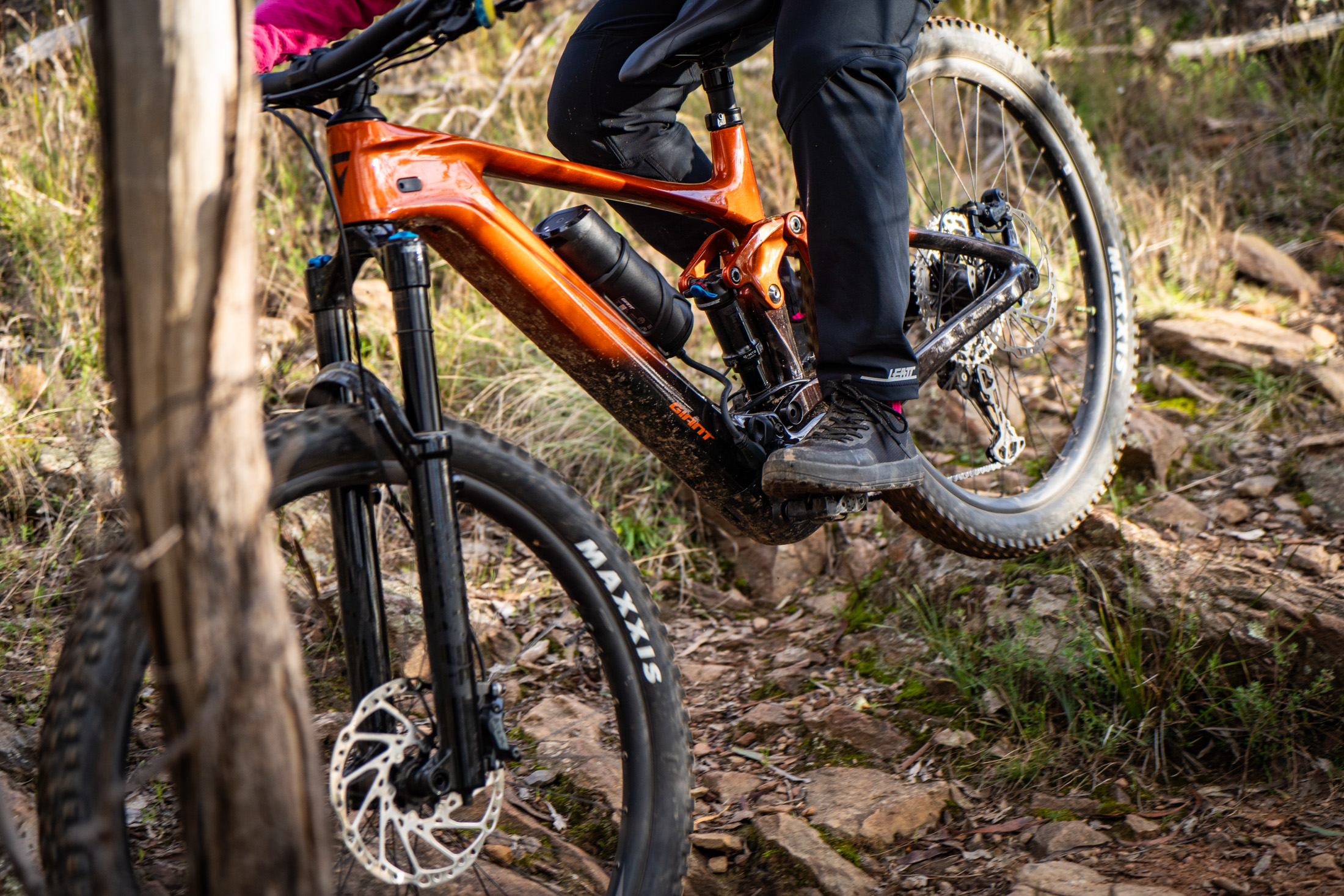
Adding the range extender is a clever way of turning the Trance X E+ Elite into more of a self-shuttler, and it allows you to use the full-powered settings liberally. For riders on the heavier side, I’d suggest that the range extender will be a necessity.
In my case, I was able to increase my ride time to three hours, racking up 2,000m of elevation gain over a distance of 48km while using the Tour mode. It also meant I could head out for a ride with friends on full-powered e-MTBs, without fear of getting left behind.
The downside is that it elevates the total price of the bike to $10,639 AUD. It also lifts the weight to 21.53kg, though it’s still quite a bit lighter than an equivalently priced Specialized Levo Comp Alloy (24.12kg) or a Trek Rail 9 (23.6kg). Obviously, if you remove the range extender, the weight advantage grows further for the Trance X E+ Elite.
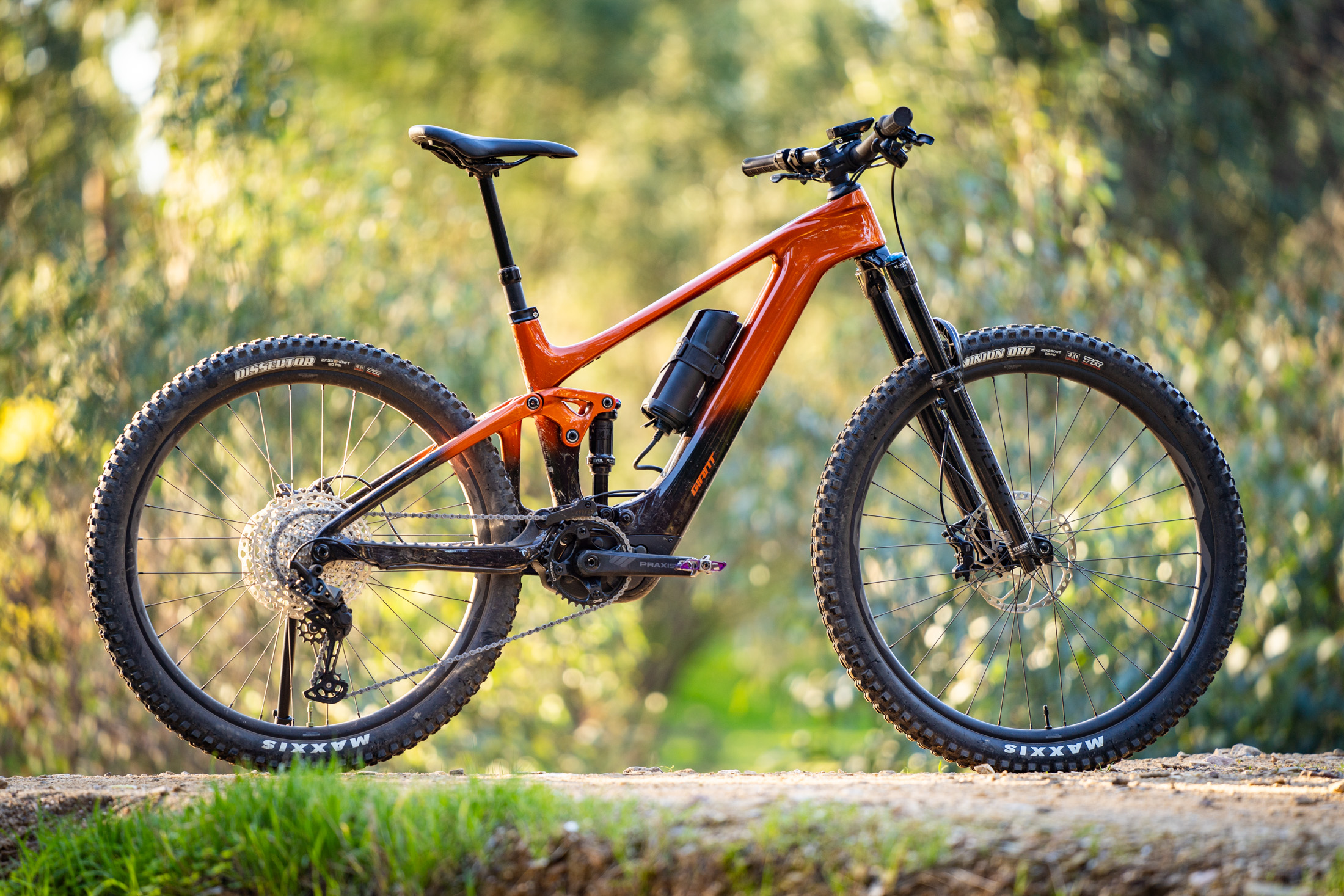
Component highs & lows
Out of the four-model range, we reckon the Giant Trance X Advanced E+ Elite 2 is the pick of the bunch. It’s priced well and there’s nothing here that’s lacking in either performance or durability.
The brakes are solid and easy to set up, and we’re glad to see 203mm rotors as standard. The Shimano drivetrain shifts crisply under load, though we did manage to bend the derailleur after a big stick got caught in the spokes. Thankfully a spare SLX mech is only a bit over $100 AUD to replace, though the experience had us wishing for the reliability of SRAM’s bomber Transmission.
The Fox suspension is plush and easy to adjust, with the 36 being a notable highlight. As mentioned, it would be fairly easy to extend the fork to 160mm, and harder riders could potentially upgrade to a GRIP2 damper down the line for improved high-speed control.
Those same riders may want to look at burlier tyres too. The stock rubber has worked well for us, and indeed the EXO casings provide a nicely supple ride quality with the CushCore insert keeping punctures and rim-dings at bay. Still, aggressive riders will be raising their eyebrows at such thin tyres on a 20kg e-MTB. The Reign enduro bike weighs 6kg less, but it still has tougher tyres than this!
Otherwise the Giant-branded wheels have been rock-solid. They are heavy, contributing to the overall weight of the bike, but there’s a certain peace of mind that comes from having tough and relatively cheap alloy rims when you’re bashing your way down a gnarly rock garden.
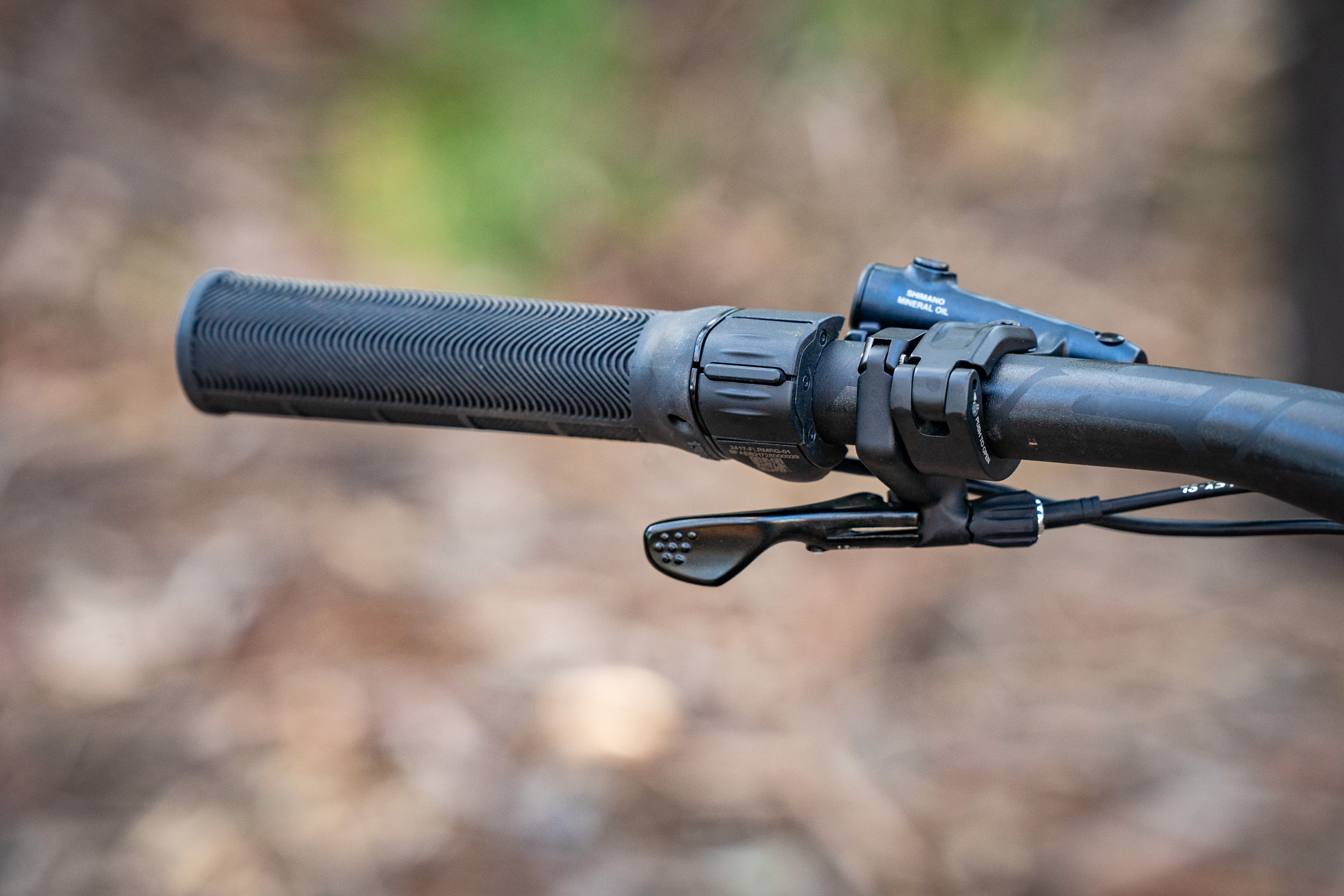
Electrics
The user interface works pretty well on the Giant Trance X E+ Elite. I like the discreet profile of the RideControl Ergo 3 remote, though the buttons are kinda vague and occasionally difficult to engage while riding. If you’re not one to change modes often, it’s possible to remove the remote entirely and use the main button on the RideControl GO console instead.
The display itself is unobtrusive, with coloured LEDs highlighting which assist mode you’re in. However, there are only five white LEDs to indicate the battery status in 20% blocks. This means you can’t easily tell if you have 21% or 39% battery left, forcing you to open the app to find out the exact percentage.
Speaking of the app, it too has room for improvement. I needed to manually connect the bike to the app every time I used it. And despite saving my settings after de-tuning the maximum torque levels, whenever I recharged the battery the system would default back to the 85Nm maximum torque setting for each mode. We’re yet to confirm with Giant why this issue is occurring, though I suspect it’ll likely be solved with a firmware update.
That aside, the SyncDrive Pro 2 has performed well throughout testing. It’s reasonably quiet on the trail, though there is some clacking on the descents due to the internal freewheel. Overall noise is comparable to Shimano and Bosch drive units.
However, there was an additional noise that was detectable during motor overrun and when cruising along a flat road at high cadences. It’s a slightly dry whine that might be coming from the meshing surfaces between the internal gears. Looking around online it appears others have experienced this noise too, though it doesn’t seem to affect performance and I’ve never noticed it while actually riding off-road.
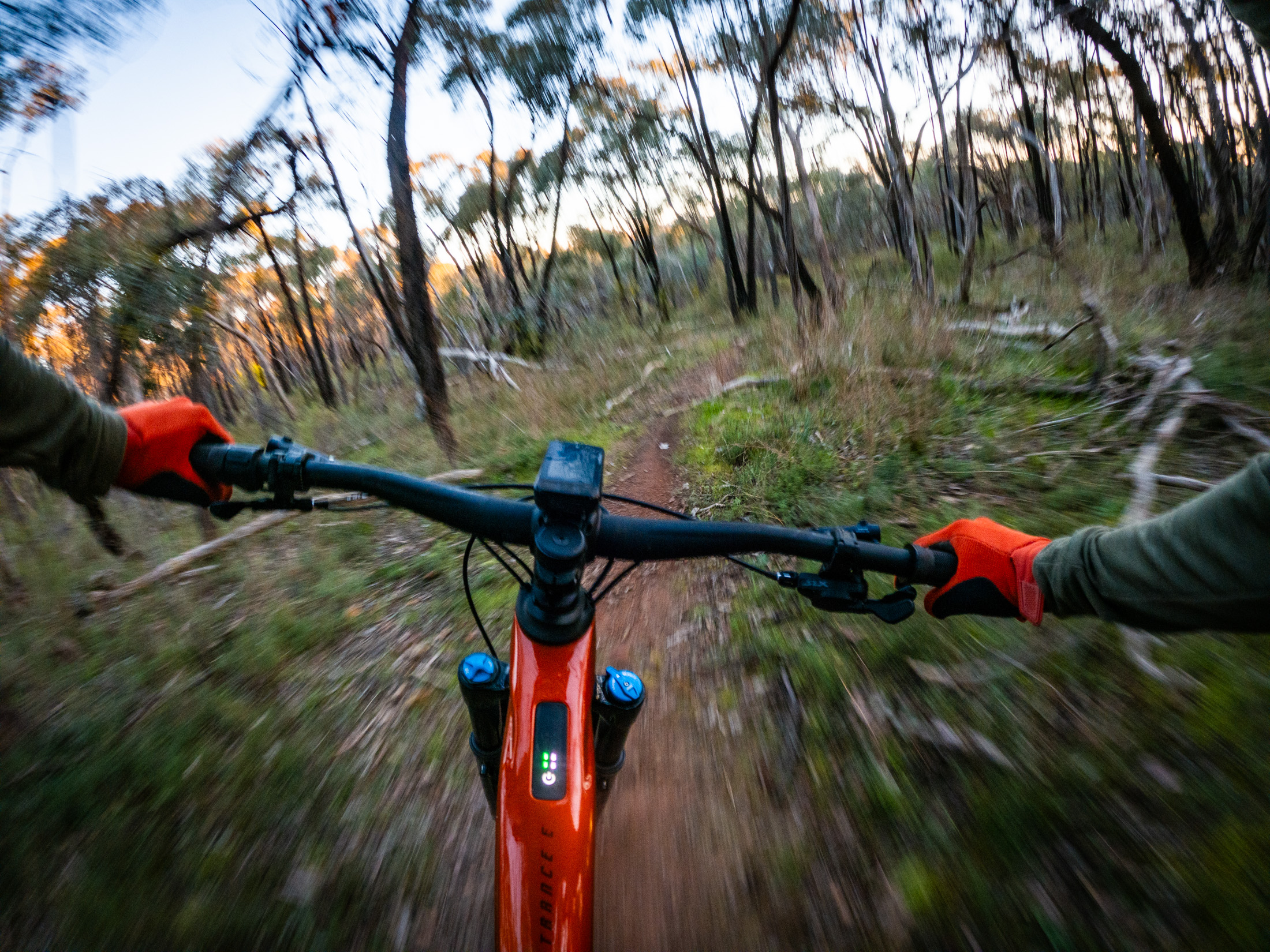
Giant Trance X E+ Elite vs Trance X E+
With the arrival of the new Giant Trance X E+ Elite, we expect there’ll be quite a few prospective customers weighing it up against the regular Trance X E+.
The equivalent model to our test bike is the Trance X Advanced E+ 2, which retails for $9,999 AUD. It costs more because it comes with that huge 800Wh battery, but otherwise its uses the same motor, user interface, a full carbon frame and a near-identical component package.
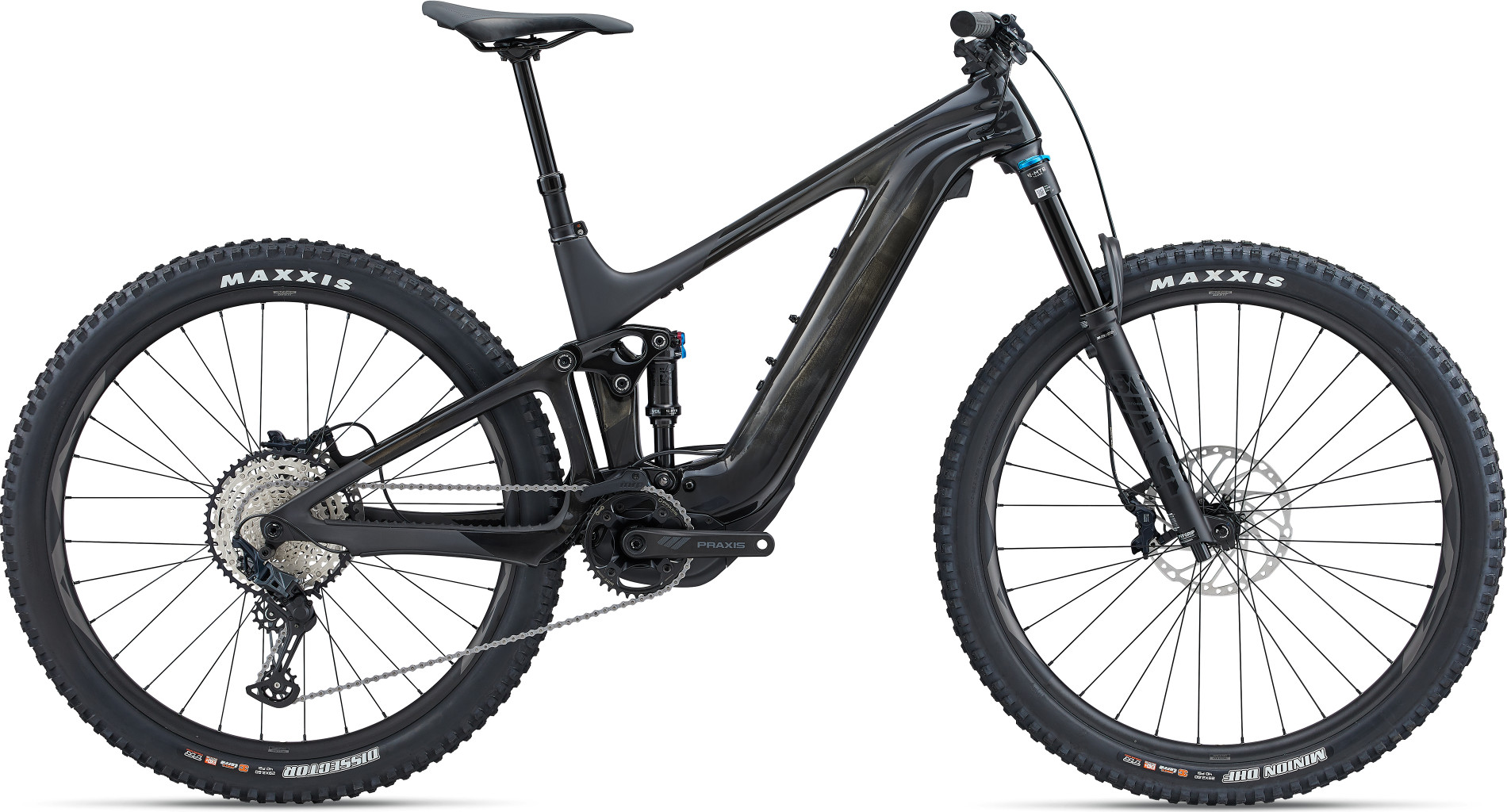
One of the biggest differences between the two bikes is the weight, with the bigger Trance X E+ coming in around 4kg heavier. Much of the added mass sits high and forward on the bike due to the longer battery, making it harder to lift the front wheel off the ground.
Compounding this is the dual 29in wheel setup and the longer chainstays. This makes the Trance X E+ more sluggish to ride on twisty singletrack, though it is very stable on flatter terrain and up steep climbs. The bigger volume 2.6in tyres enhances climbing grip further, and along with the 800Wh battery, it’s capable of racking up a tonne of elevation gain.
If you’re after a comfortable cruiser for taking on all-day adventures with lots of climbing, the regular Trance X E+ may be the better option. That will especially be the case for heavier riders who can benefit from the bigger battery, which allows you to use the motor’s higher assist modes. We’d also suggest that taller riders who need an XL frame may actually prefer the longer chainstays from a balance perspective.
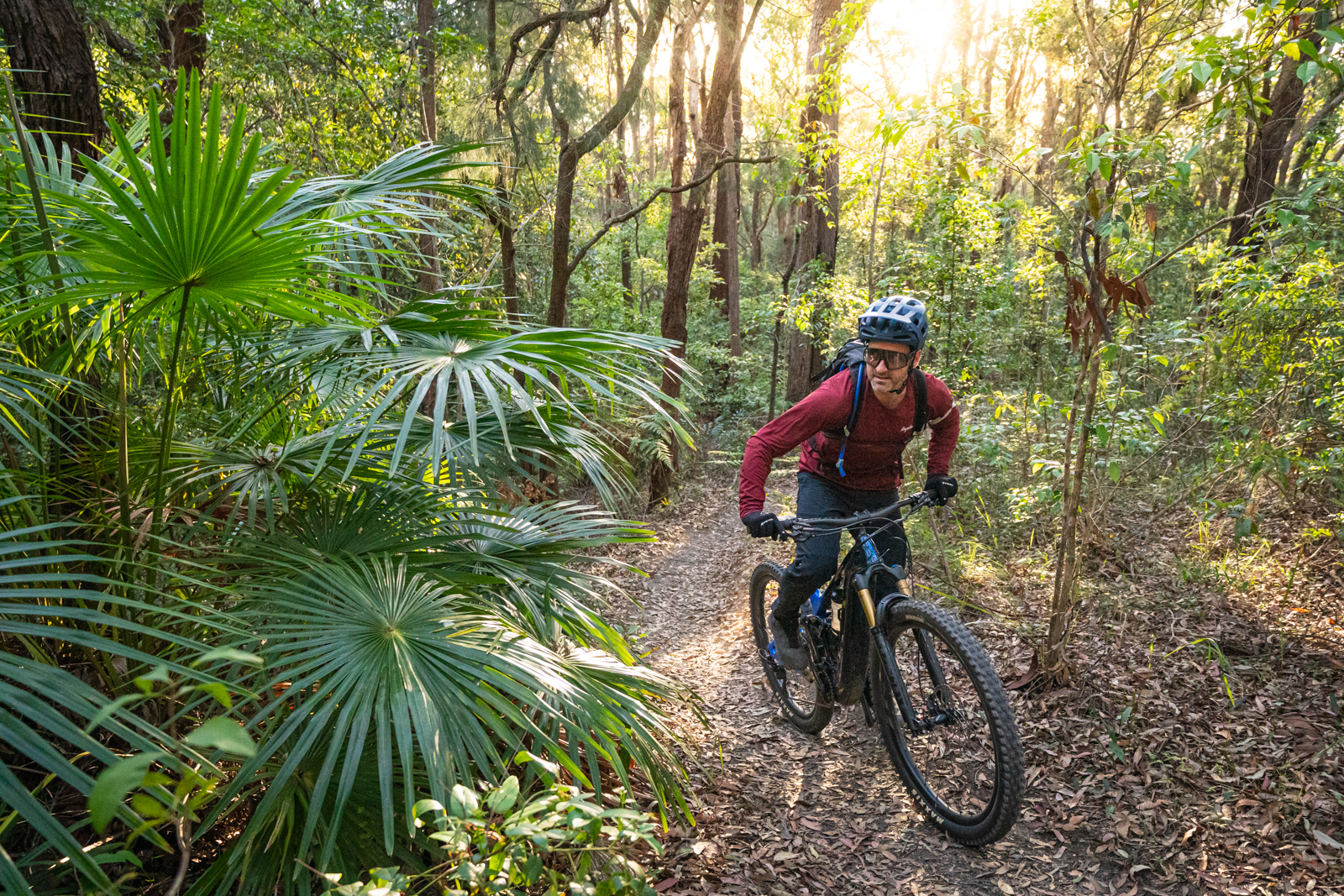
Lighter and sportier riders who don’t need as much assistance will naturally gravitate towards the Trance X E+ Elite. Its mullet setup, short chainstays and smaller battery make it a considerably more playful and agile bike that’s easier to manoeuvre on tight trails, and we reckon it’s more fun to ride as a result.
Giant Trance X E+ Elite vs Specialized Levo SL
The combination of a full-powered motor and a slim 400Wh battery certainly puts the Giant Trance X E+ into unique territory. The Rotwild R.X375 is one of the only competitors we’re aware of that pulls off a similar trick, though it’s not a bike we’ve seen on Australian shores.
A lightweight e-MTB that is a common sight on our local trails however, is the Specialized Levo SL.
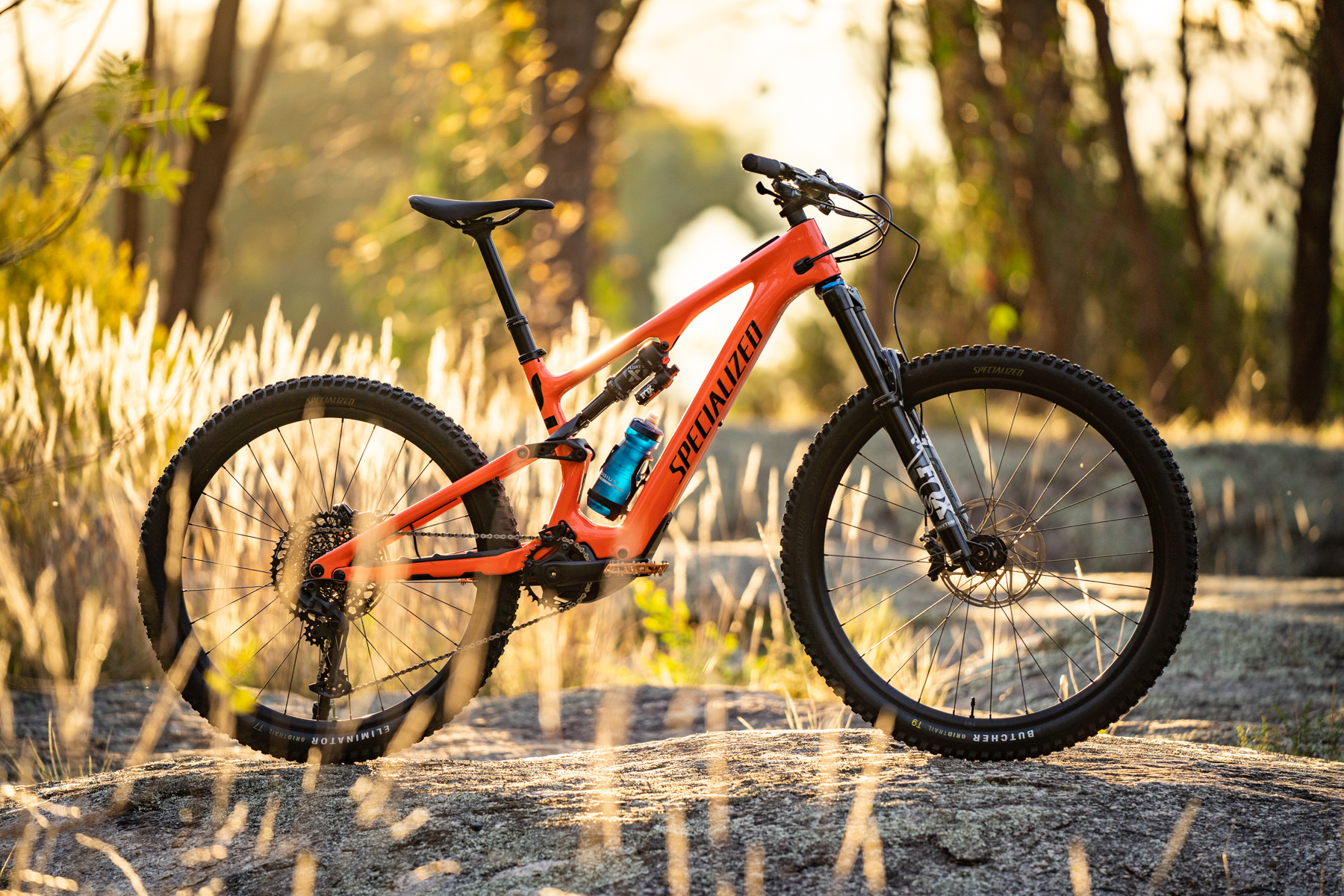
With 160/150mm of travel, the latest Levo SL offers 10mm more squish at each end compared to the Trance X E+ Elite. It also features a more aggressive package with burlier and stickier tyres, a piggyback shock and a slacker head angle (64.6° vs 65.8°).
The Levo SL incorporates modular headset cups that allow you to slacken or steepen the head angle by a full degree, and you can set it up as a full 29er thanks to a nifty chainstay flip chip. There’s also a High/Low flip chip in the lower shock mount, giving a huge range of possibilities when it comes to geometry and wheel setup. Furthermore, Specialized produces the frame in six sizes, compared to just four in the Trance X E+ Elite.
You do pay for all of the extra tech however, with the cheapest Levo SL Comp Carbon model selling for $11,900 AUD. The spec is comparable, though it comes in 2kg lighter than our Trance X E+ Elite test bike (18.24kg vs 20.26kg). When you ride the two back-to-back however, you’d swear it was the other way round.
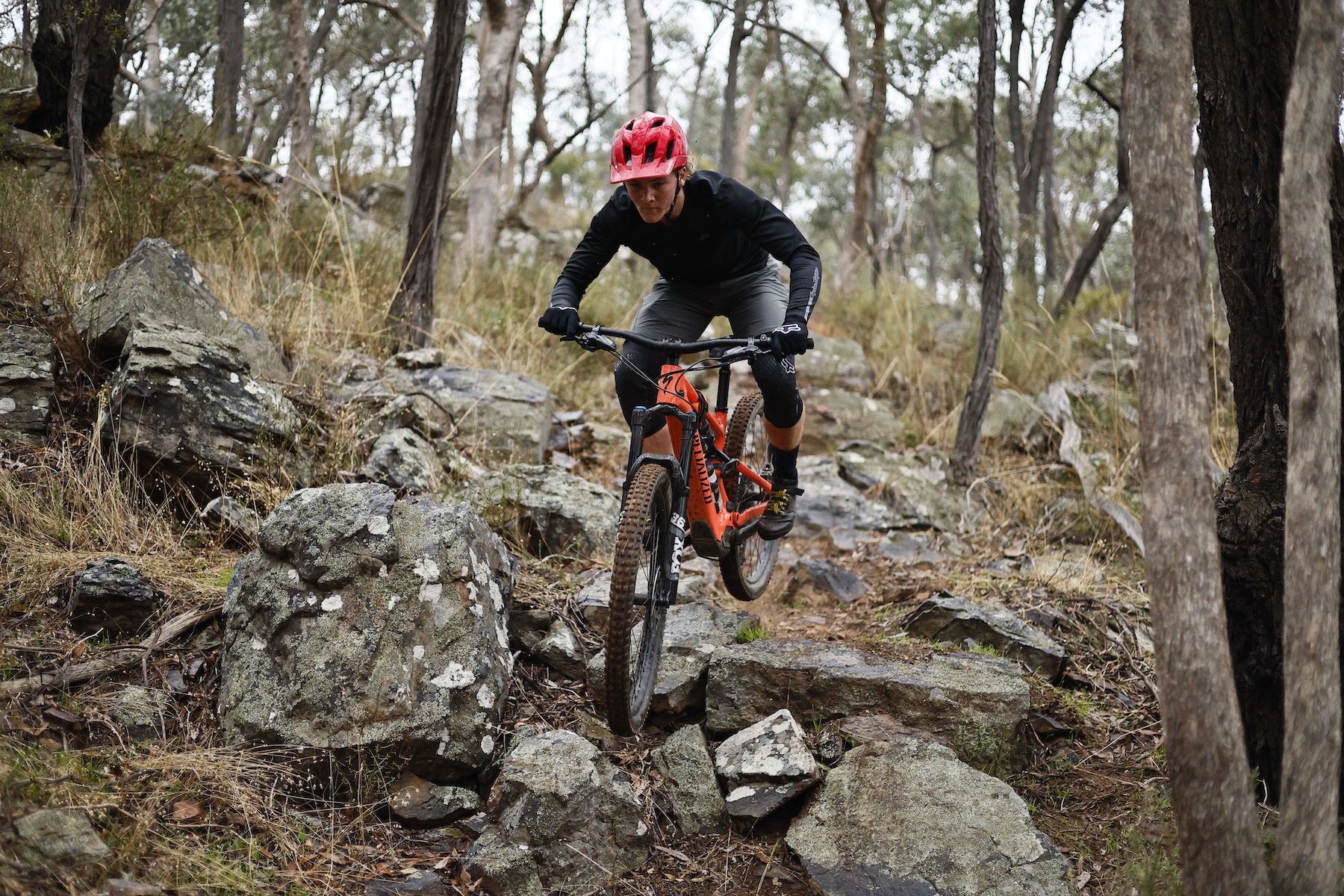
The Levo SL feels considerably burlier, with its plusher suspension and aggressive tyres delivering awesome traction and ground-hugging connectivity. It cops bigger hits beautifully, and it feels more comfortable blasting down steep and rocky descents. For those riding hard and fast on technical terrain, it’s the better performer.
Both bikes have similar climbing abilities, though with its stronger motor the Trance X E+ can shoot uphill faster and with greater support. The SyncDrive Pro 2 is so powerful, and it feels very different to the smaller SL 1.2 motor used on the Levo SL. It isn’t as refined or as predictable, but it offers notably more punch even when it’s throttled to the same theoretical peak torque of 50Nm.
Indeed the extra power of the Trance X E+ Elite may be the deciding factor for some riders. The ability to increase its battery capacity to 600Wh is also appealing, as it essentially gives you two-bikes-in one. If you’re willing to commit to the lightweight e-MTB genre, then the Levo SL is no doubt one of the cleanest and best-performing bikes out there. But if you’re after something that’s able to straddle multiple applications, the Trance X E+ Elite is arguably the more versatile option.
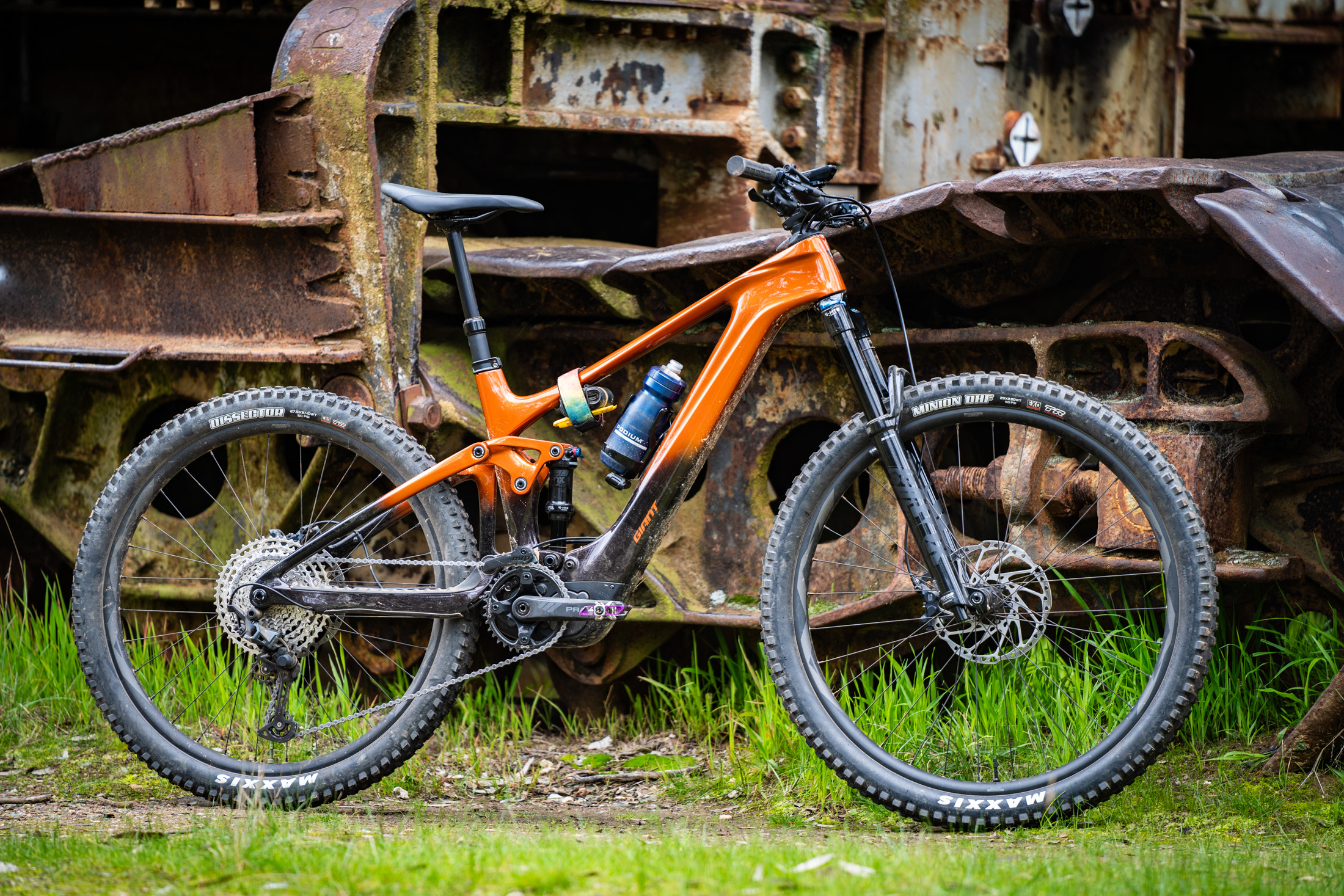
Flow’s Verdict
Combining a full-powered motor with a smaller battery, the Giant Trance X E+ Elite takes a unique approach to the lightweight e-MTB genre. Whether that approach pays off will really boil down to your personal needs and riding style.
Heavier riders using the higher assist modes will find themselves rinsing the 400Wh battery quickly. That makes the range extender more of a necessity, though at that point you may be better off looking at a traditional full-powered e-MTB instead.
For lighter and sportier riders who are chasing a more subtle level of assistance, the Trance X E+ Elite starts to make a lot more sense. The lower assist modes make it possible to get a decent amount of range while being able to enjoy the handling benefits of having a lighter and smaller battery.
Indeed the handling on the Trance X E+ Elite is one of its strongest suits, with an agile and playful character that makes it a barrel-load of laughs to ride. The mullet setup pays big dividends on the trail, helping the bike to dive in and pop out of corners. It’s more intuitive on tight trails and down steep descents compared to the full-size Trance X E+, and the plush suspension offers excellent grip across a wide variety of terrain. Simply put, we’ve had more fun riding the Trance X E+ Elite, and for us that makes it the easy choice out of the two.

Simply put, we’ve had more fun riding the Trance X E+ Elite, and for us that makes it the easy choice out of the two.


